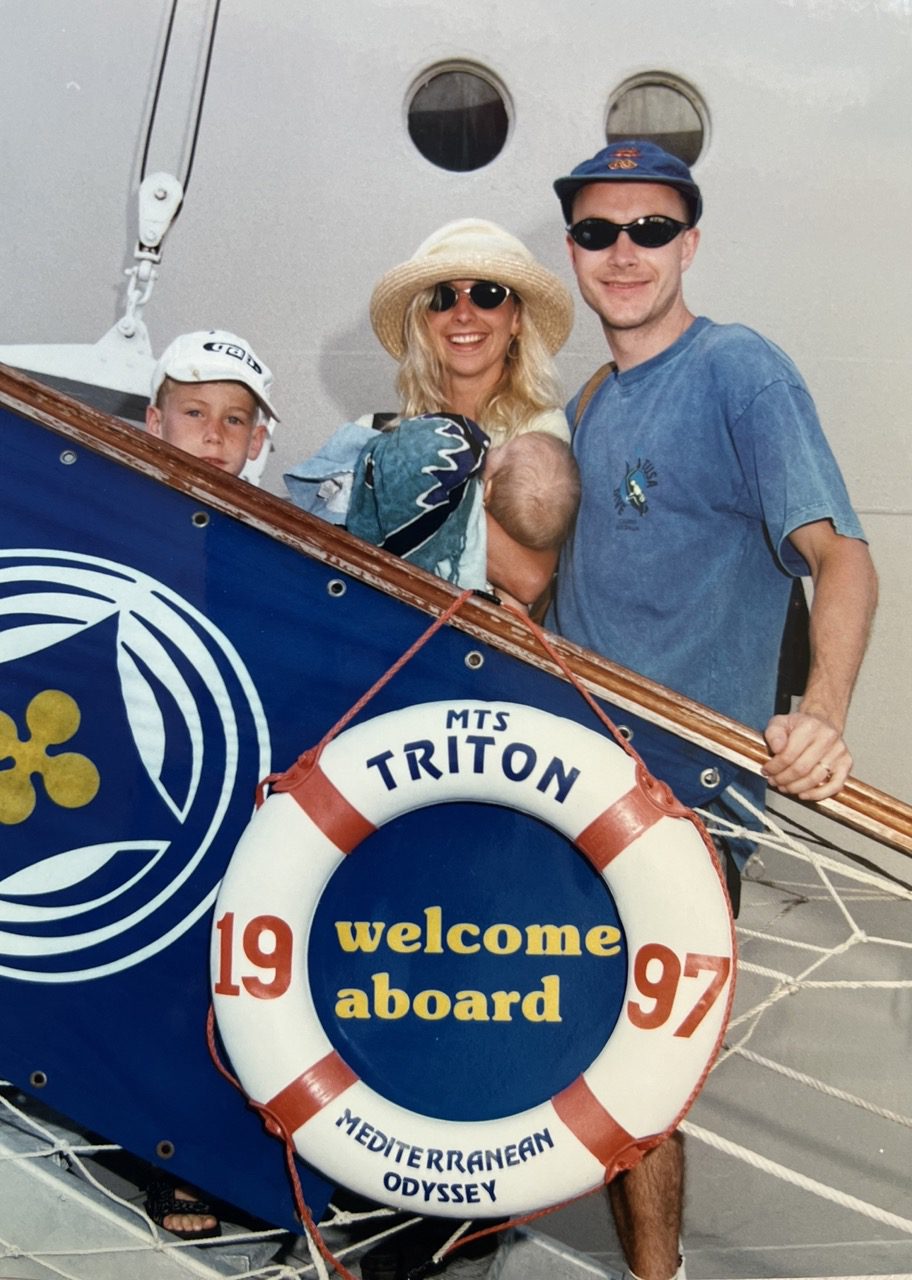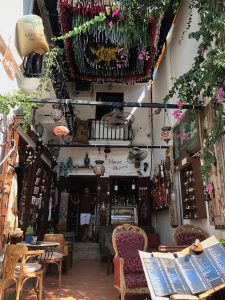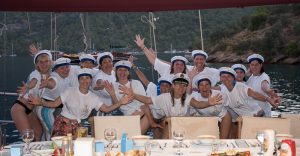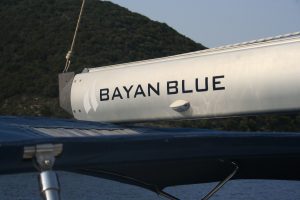🙂 Captain loved the Durban link! Free drinks! Formed a cool clique!
🙁 Never ever go on the group coach tour excursions!
ITINERARY:
Athens – Crete – Santorini – Rhodes – Ephesus – Istanbul – Mykonos – Delos – Patmos – Athens
We were so excited to d our very first Cruise. I had never been to Greece or Turkey before, so this was super special – real BUCKET LIST!
We flew from Heathrow to Athens and checked into our Hotel – it was full of athletes as the 1997 World Championships were being hosted in Athens! We had a great hotel with a lovely view of the Athenian Acropolis from our pool.


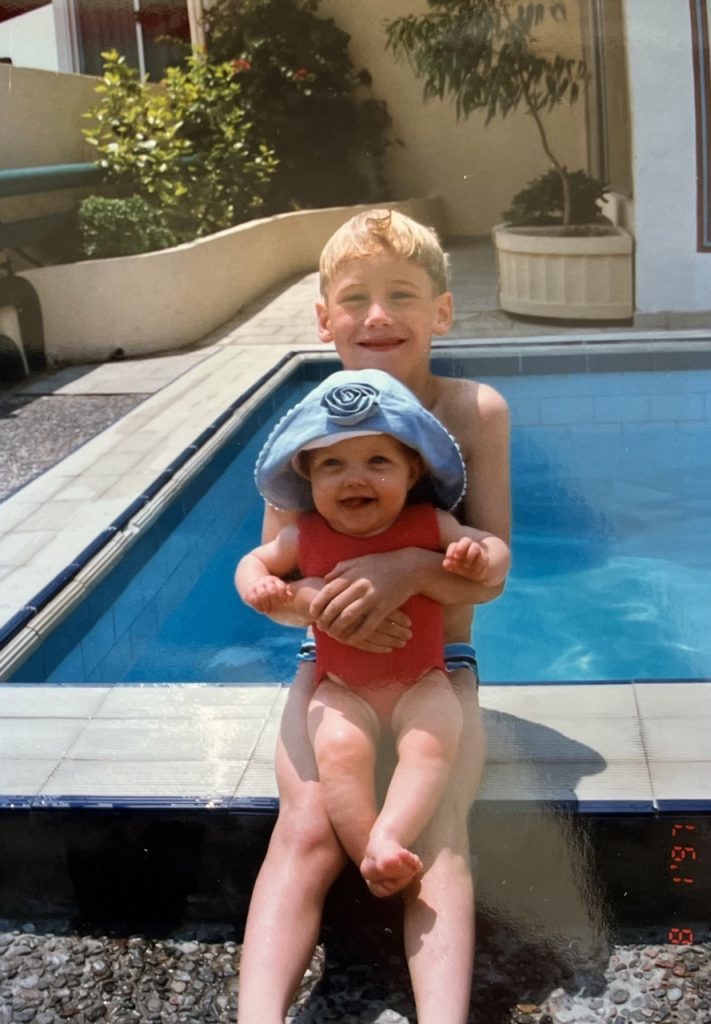
We boarded our ship early the next morning. We had a small cabin with portholes. We had to do a quick safety briefing with our lifejackets once we boarded.
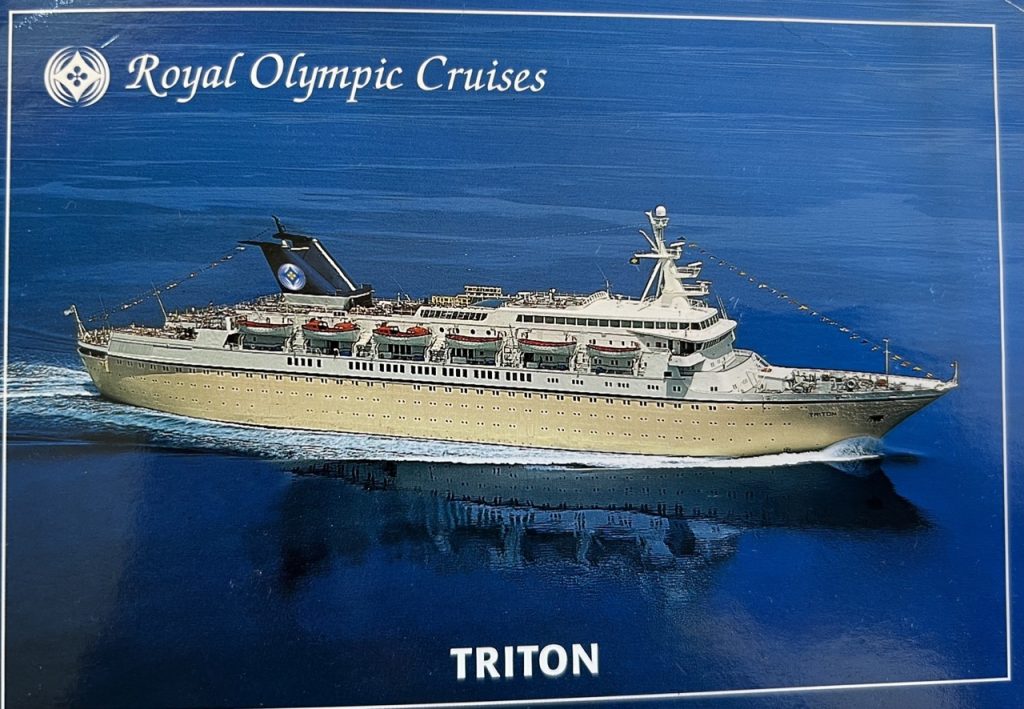
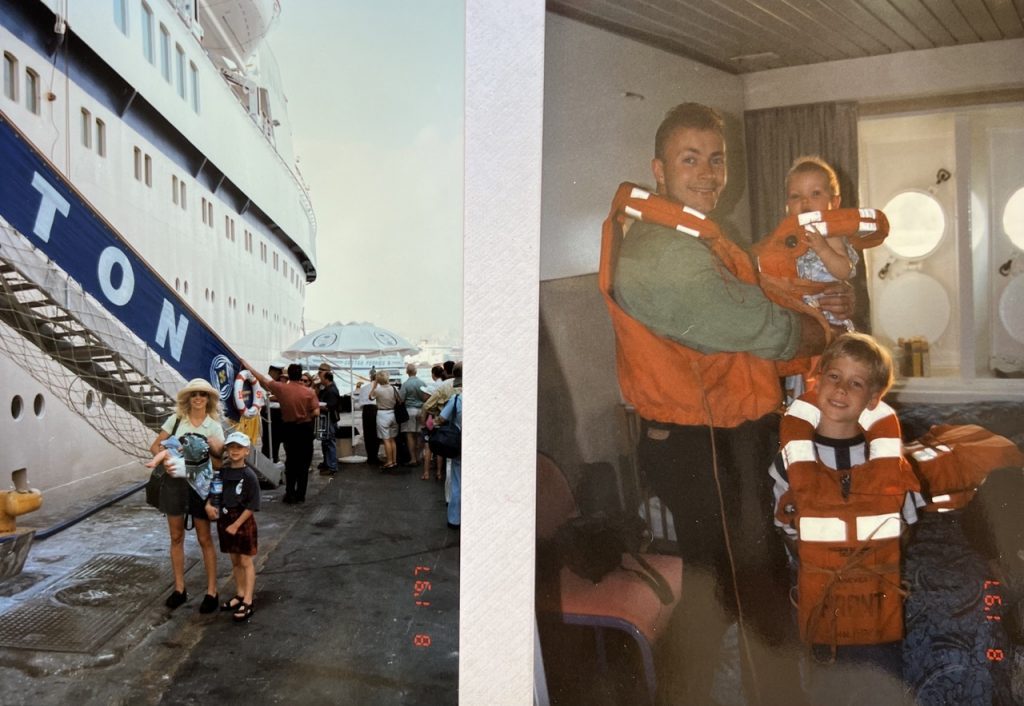
At our first meal we sat next to an elderly couple whose children has bought them the cruise for their wedding anniversary. She was a dinner lady and he was a truck driver and when we offered them some of our wine they told us that they had no money and could not afford it … we were just offering without expecting anything in return. They asked to be placed at their own table which was great for us as we had a trainee waiter who simply adored the children and gave us extra of evrything! 🙂 Trent loved the swimming pool and soon made friends.
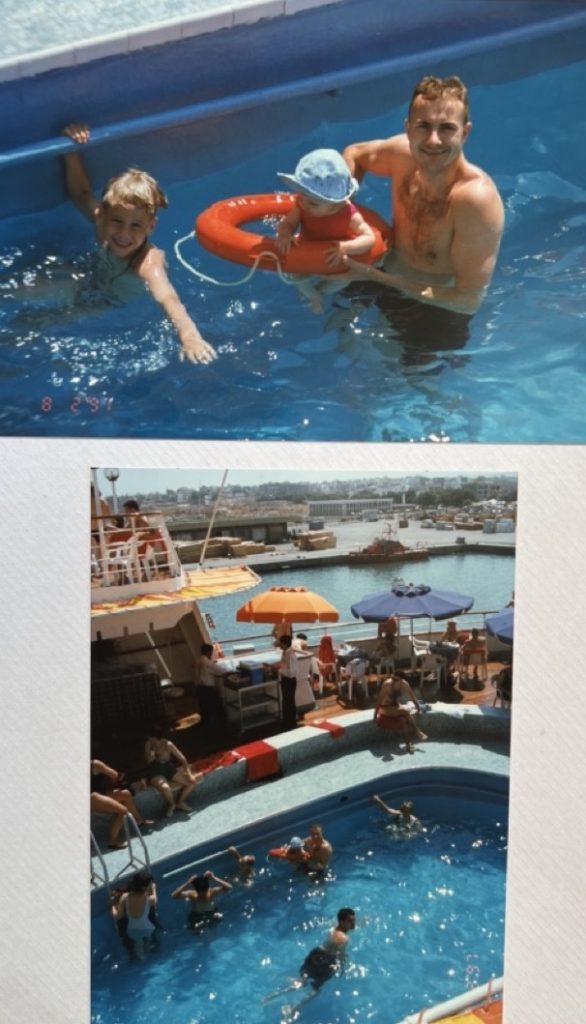
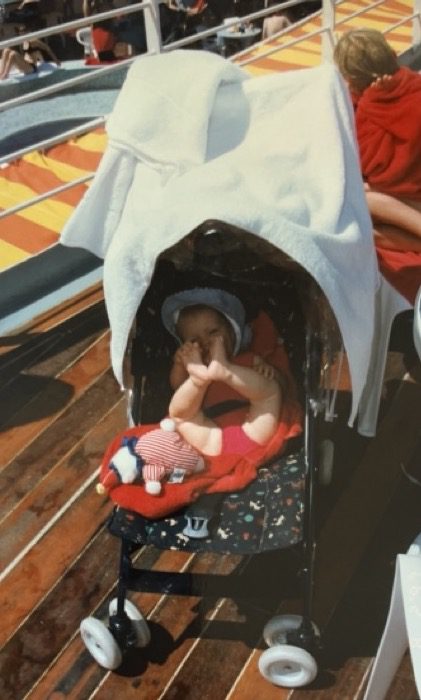
That evening heralded entertainment and Dancers – fun!

Our first morning excursion was to Crete. Paul and I had decided that we would not participate in Group Coach excursions with the masses so we simply took at a taxi from the Marina.
Crete is the largest and most populous of the Greek islands, the 88th largest island in the world and the fifth largest island in the Mediterranean Sea, after Sicily, Sardinia, Cyprus, and Corsica. Crete rests about 160 km south of the Greek mainland, and about 100 km southwest of Anatolia. Ancient Crete is the place where the Minoan civilisation, one of the most important civilisations of the world (2600-1150 BC), started. Located just outside the modern city of Heraklion, Knossos is the most famous and significant archaeological site on Crete. The Palace of Knossos was the center of the Minoan civilisation. The site contains the remnants of palaces, homes, and a labyrinthine network of rooms and corridors.

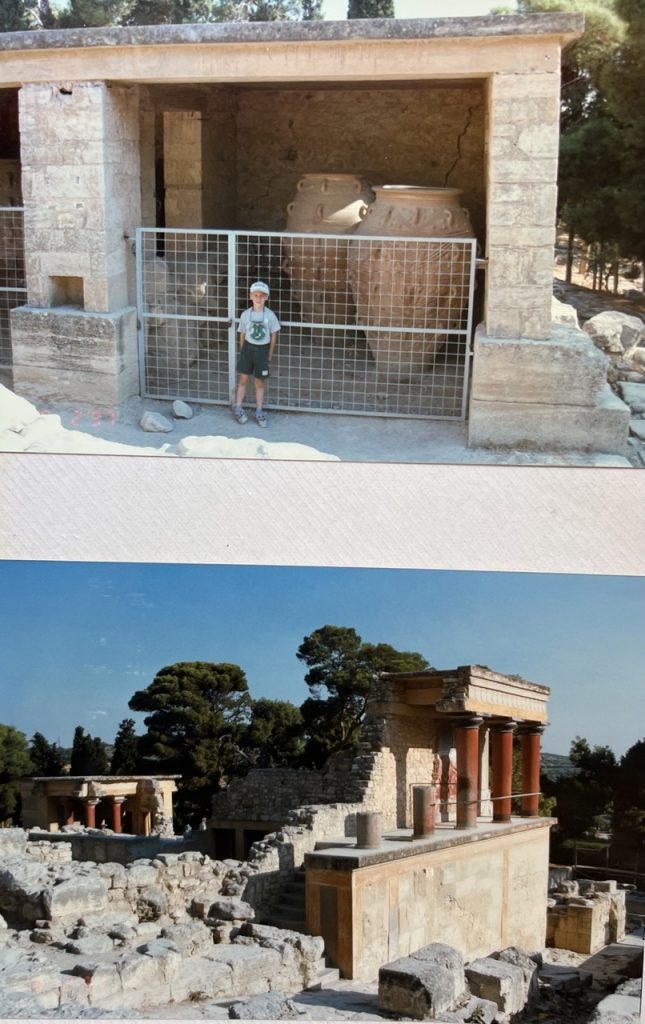
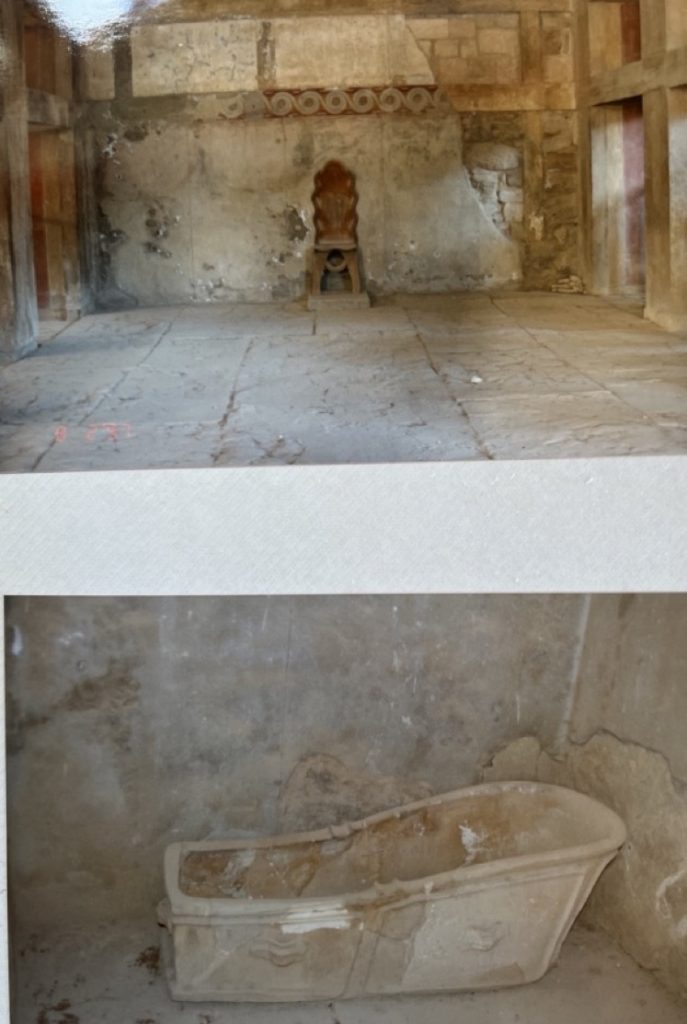

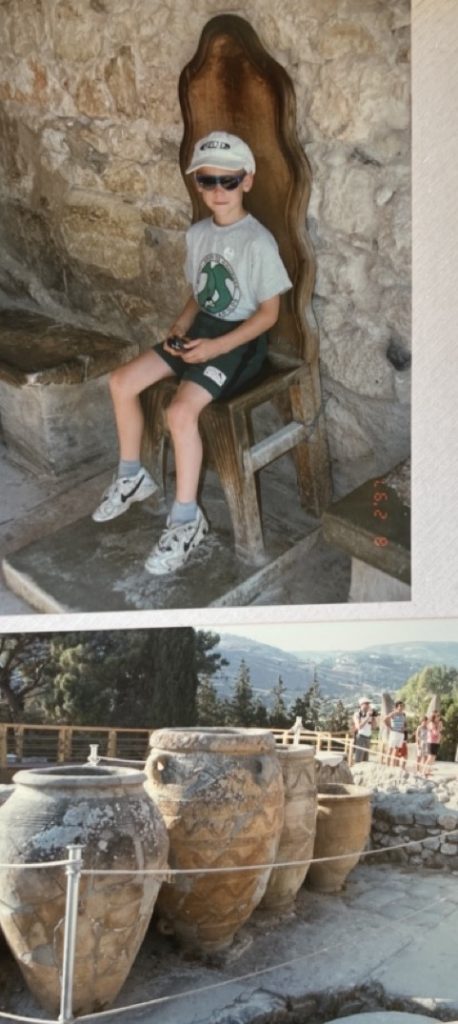

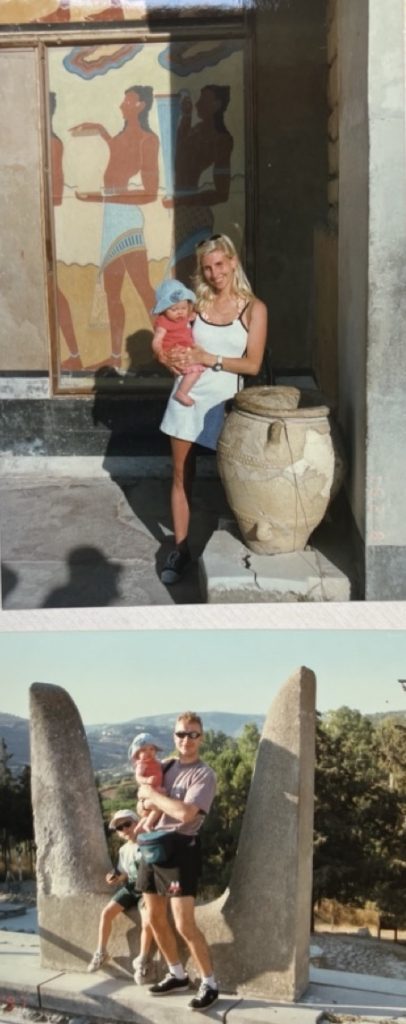
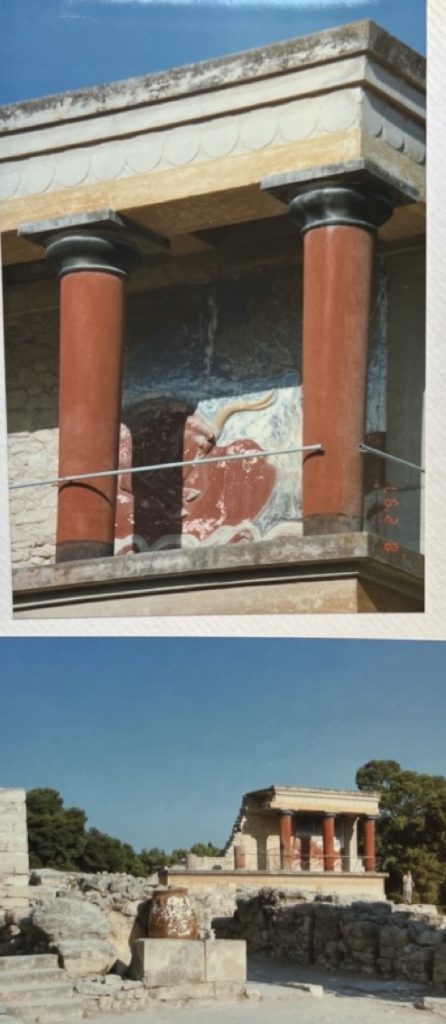
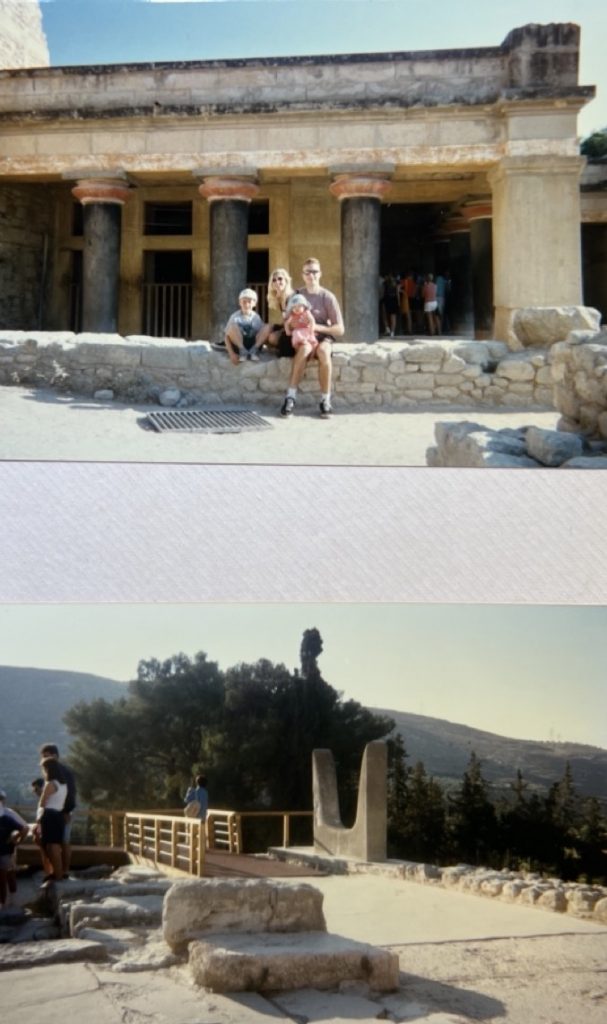
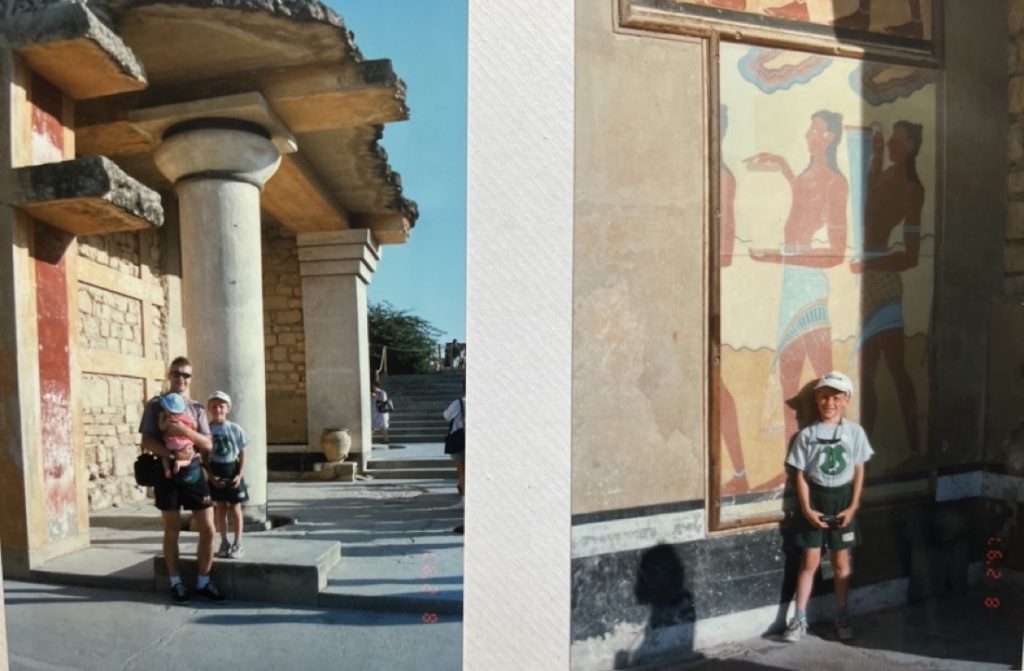
That evening on the boat we got chatting to Dimitris and Louisa, whose Father owned the shipping fleet that we were hosted on. A little younger than us, and he was going to do a masters at Reading University, so we promised to stay in touch. A few others joined our group and soon we had our little clique (aged Teens – Dimitris & Sister from Greece; 20s – Us from UK; 30s Cal & Margie from Canada / Vanuatu; 40s from USA and 50s – Jack & Joan from Oz) and agreed that we would take taxis together and do sight seeing together! 🙂
The next morning we stopped in Santorini! Santorini is one of the Cyclades islands in the Aegean Sea. It was devastated by a volcanic eruption in the 16th century BC, forever shaping its rugged landscape. The whitewashed, cubiform houses of its 2 principal towns, Fira and Oia, cling to cliffs above an underwater caldera (crater). They overlook the sea, small islands to the west and beaches made up of black, red and white lava pebbles.
We took the obligatory donkeys up the hill – you can see Cal and Margie in the background of our photos.
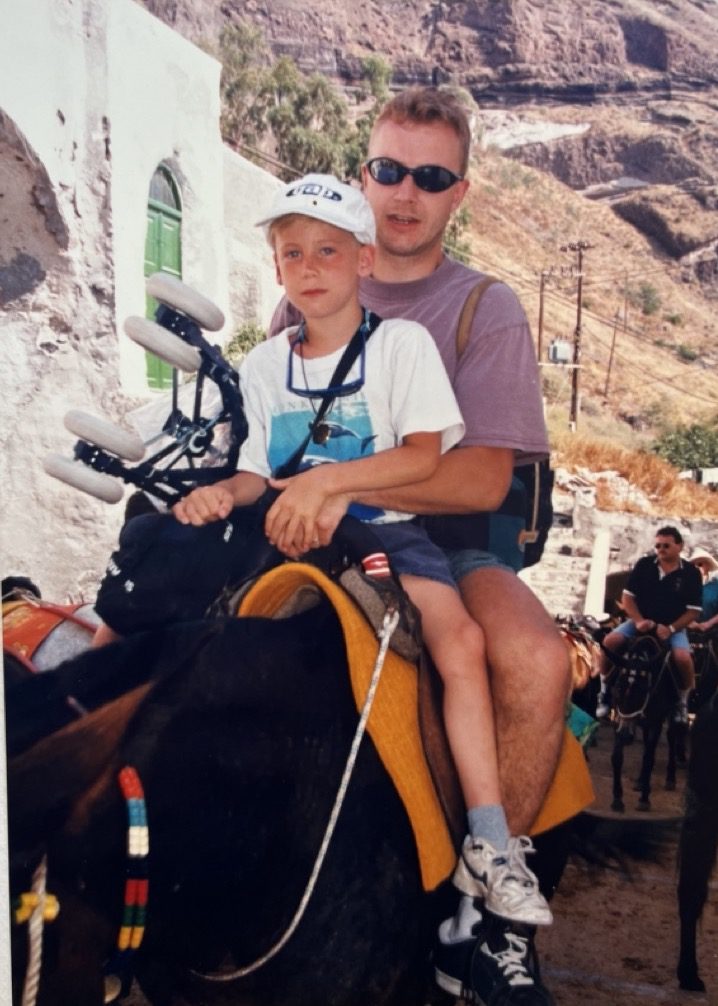
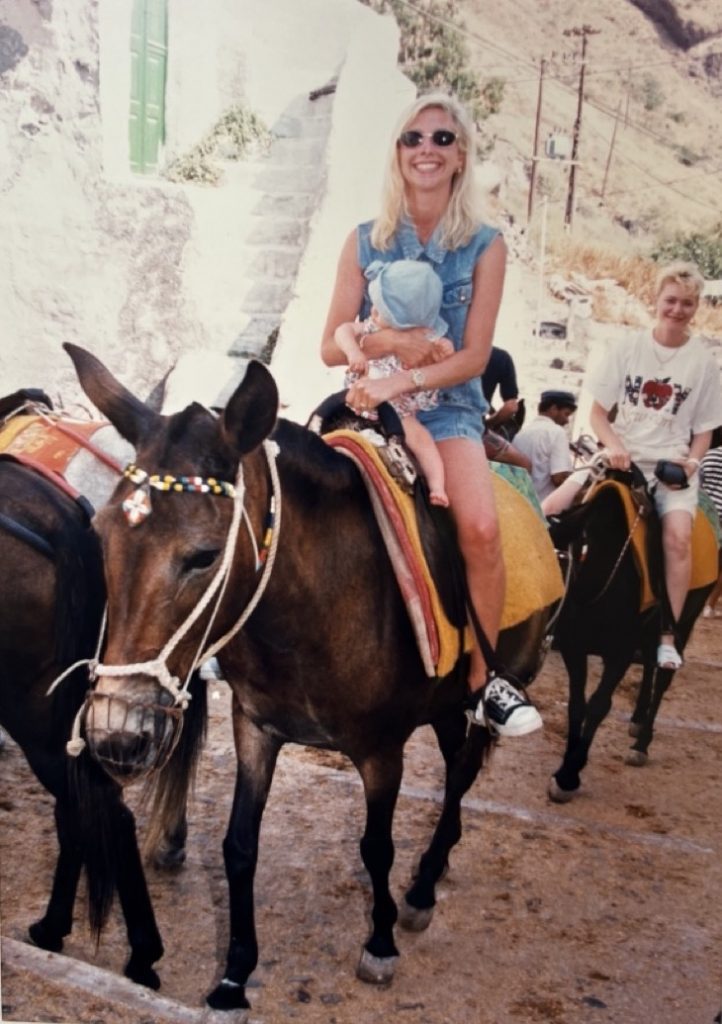
The views from all over the island are just spectacular!
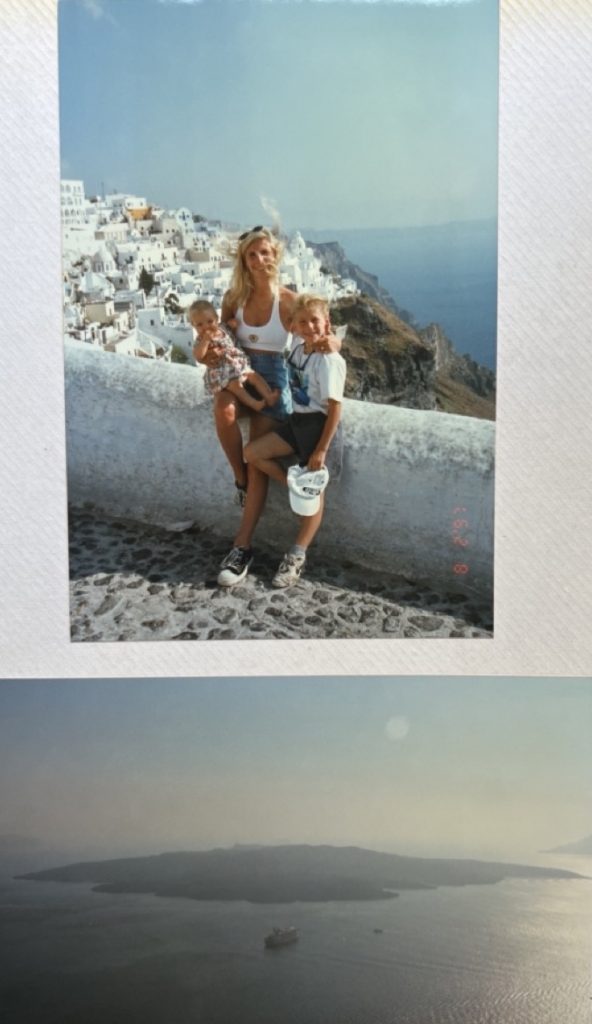
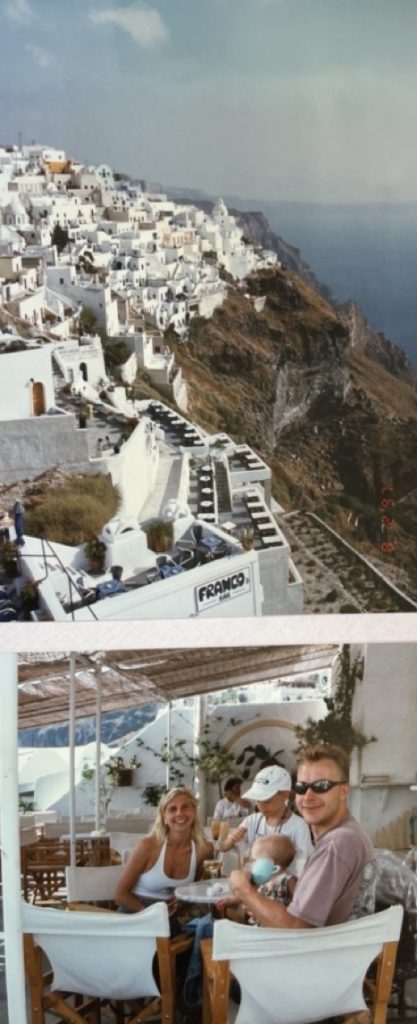
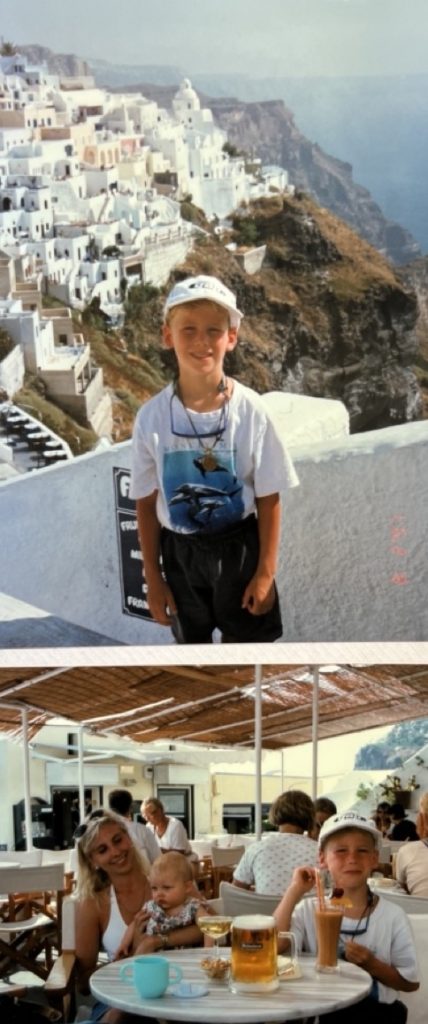

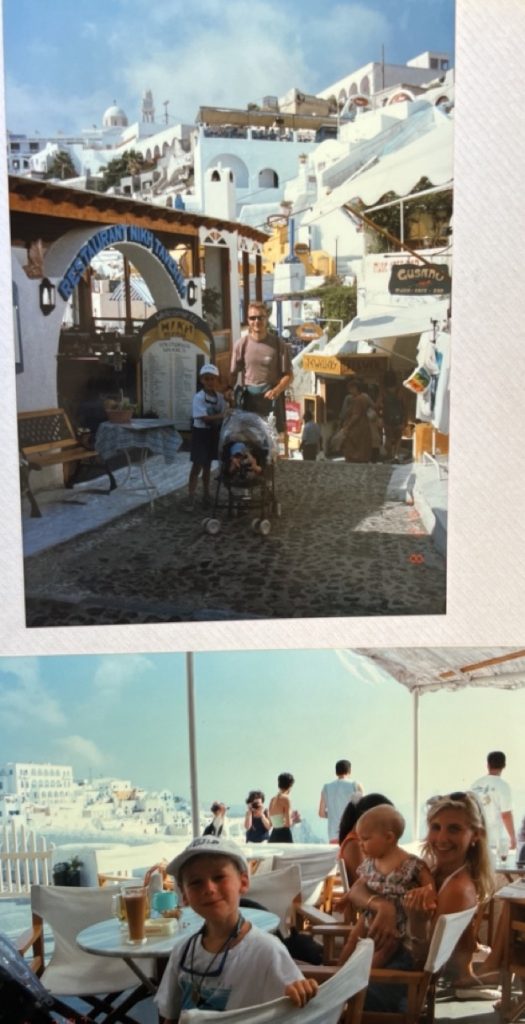

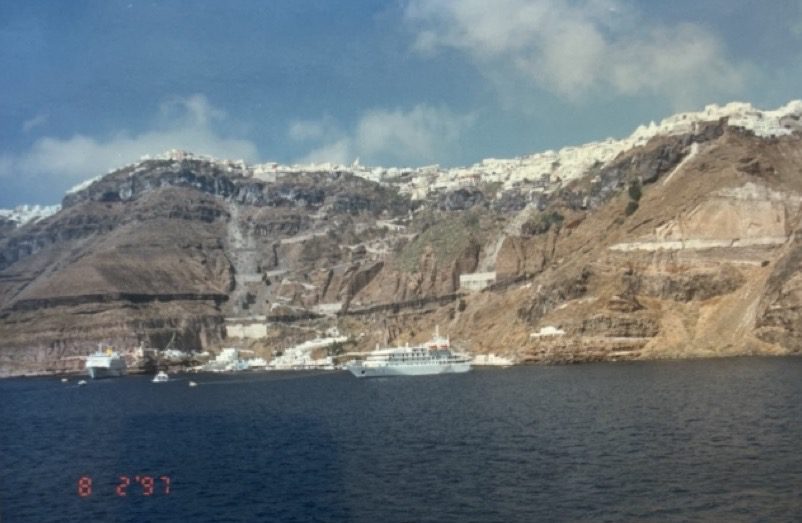
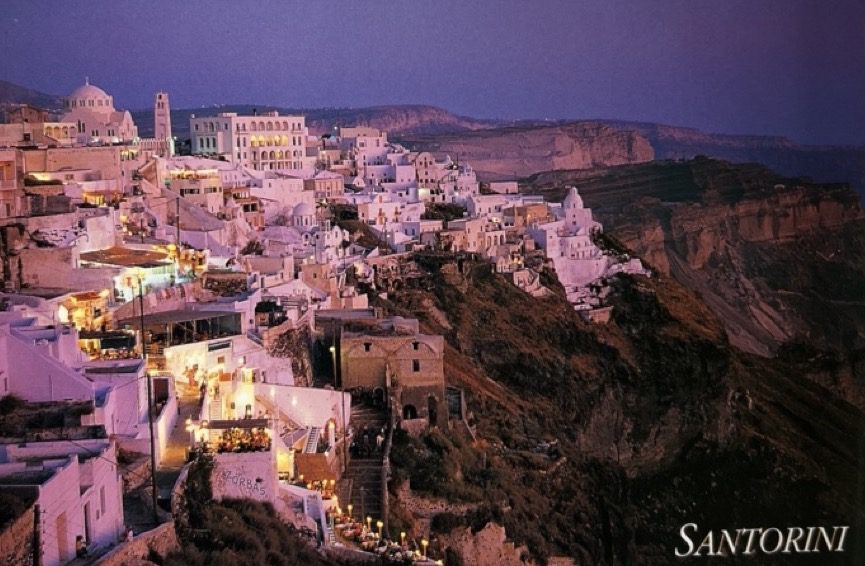
We had enjoyed a lovely day on this special island. It was time to relax by the pool.

That evening we were on the Captain’s table.

The next morning we prepared for Rhodes! Rhodes, the largest of Greece’s Dodecanese islands, is known for its beach resorts, ancient ruins and remnants of its occupation by the Knights of St. John during the Crusades. The city of Rhodes has an Old Town featuring the medieval Street of the Knights and the castlelike Palace of the Grand Masters. Captured by the Ottomans and then held by the Italians, the palace is now a history museum. Lindos is a town on the Greek island of Rhodes. It’s known for its clifftop acropolis, which features monumental 4th-century gates and reliefs from about 280 B.C. The Temple of Athena Lindia sits above an earlier temple. On the site’s lower level is the 14th-century Castle of the Knights of St. John. Among the town’s whitewashed buildings, the Virgin Mary of Lindos Church has 15th-century frescoes.


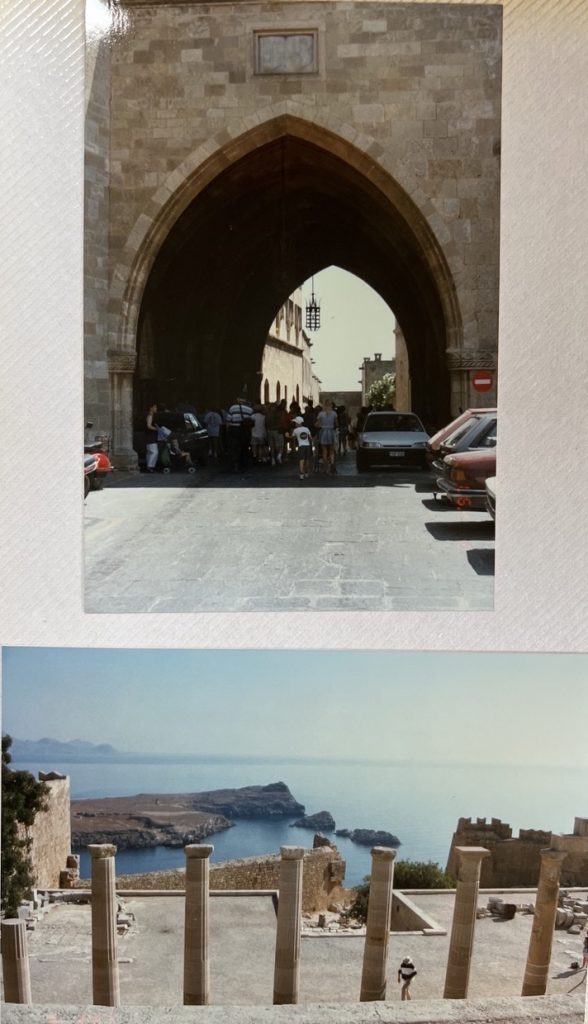
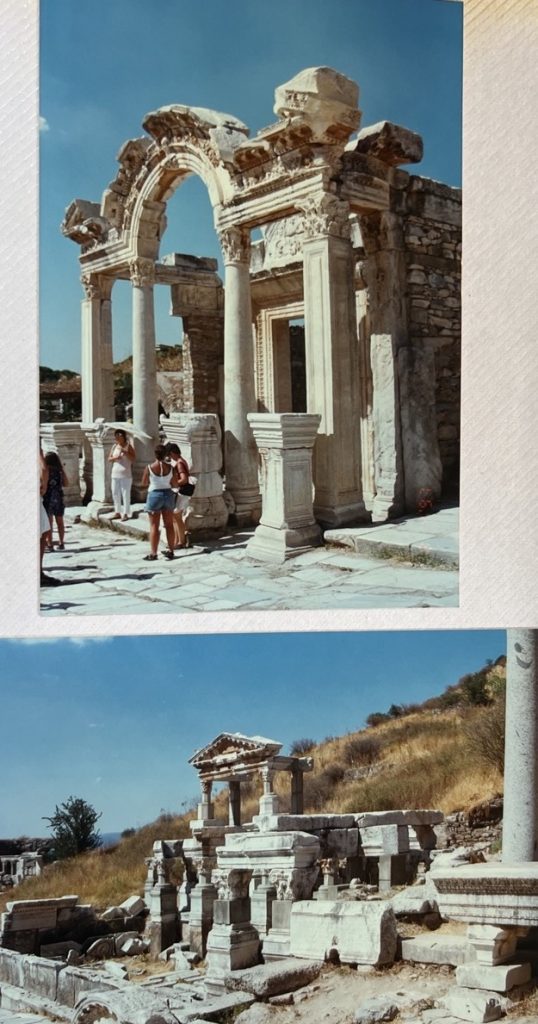
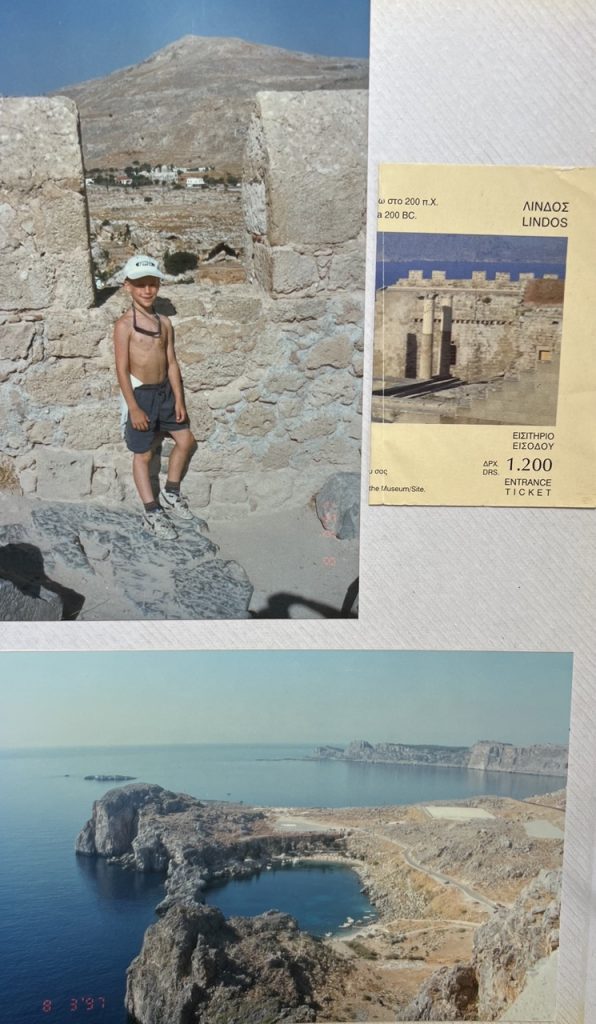
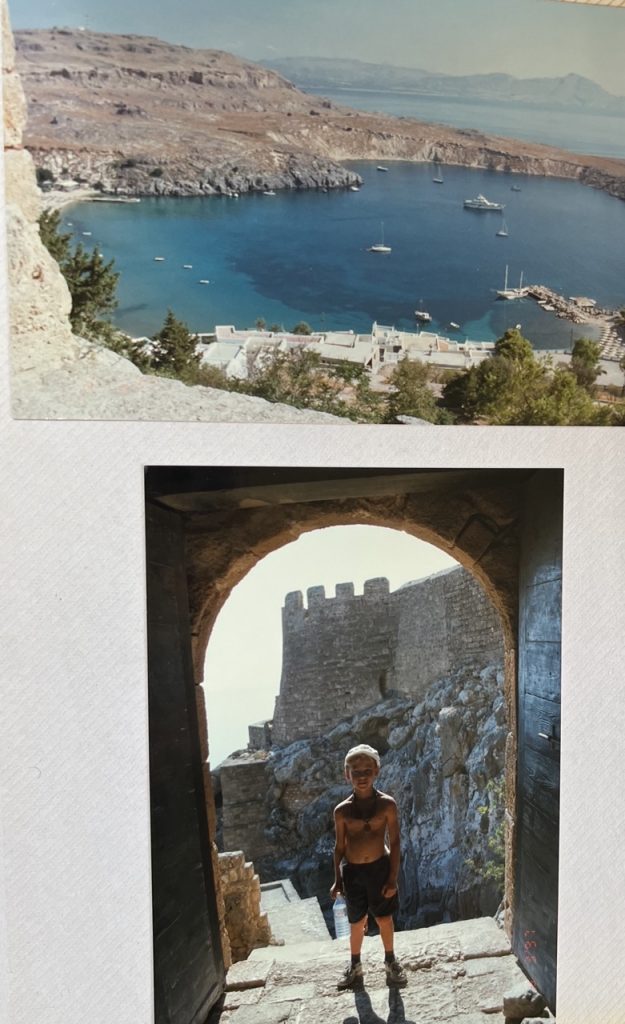
It had been very hot and welcome swim awaited us back on the boat.
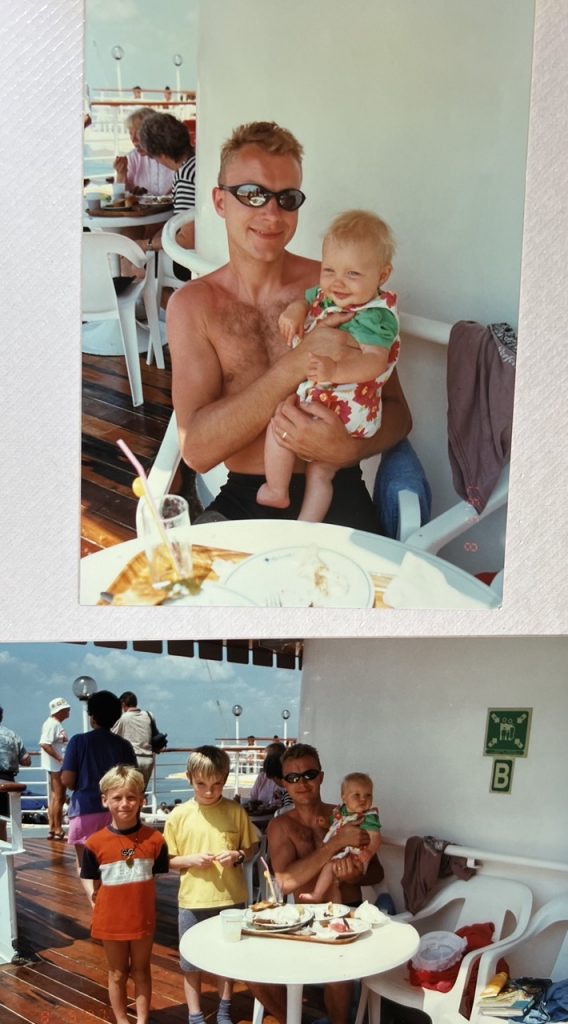
The next day we entered Turkish waters and visited the fascinating ruins of Ephesus – bizarrely depicted by a man with a huge phallus!! The statue of Priapus which is exhibited in the Ephesus Museum was found there. Priapus was the son of Aphrodite and Dionysus. Portrayed as a grotesque little man with a huge phallus, he was associated particularly with fertility rites and also protected crops and gardens from animals, birds and thieves.
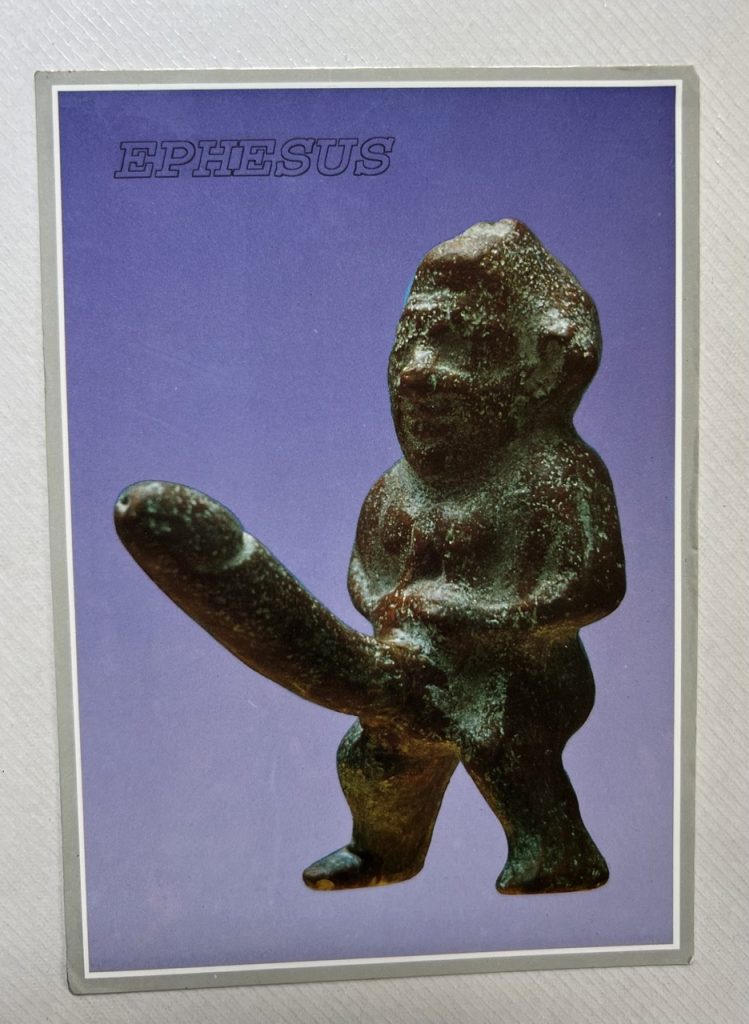

As the second largest city in the Roman Empire after Rome, Ephesus is one of the largest archaeological sites in the entire Mediterranean, despite the fact that only 15% of the original city area has been excavated. The elaborate halls and pavilions and the wide, smooth marble streets bring to life a portrait of the life of the first people of the Mediterranean 2,000 years ago.
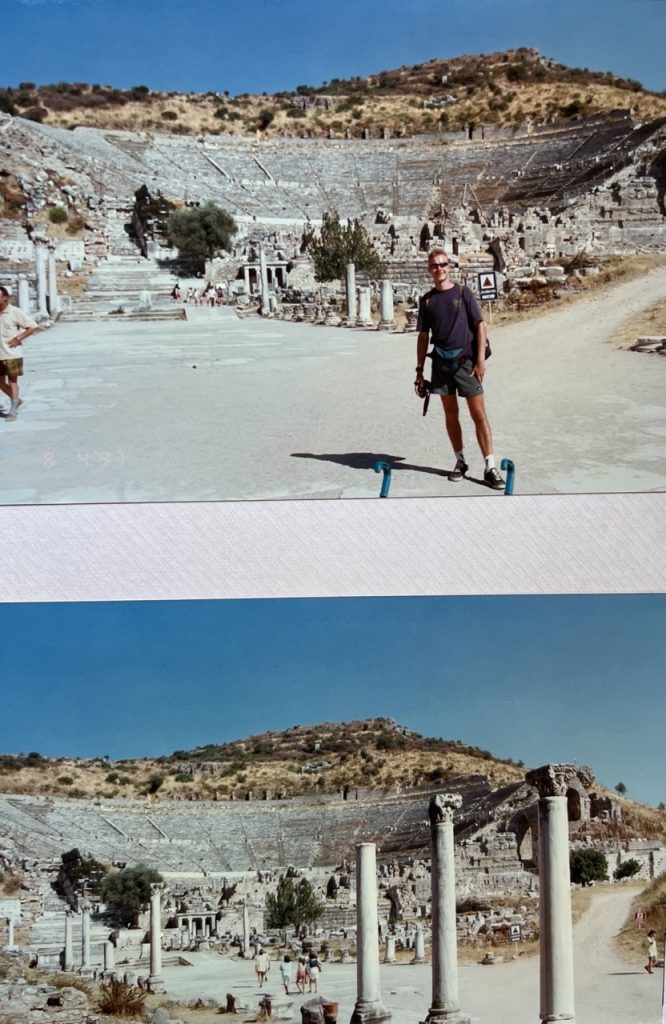
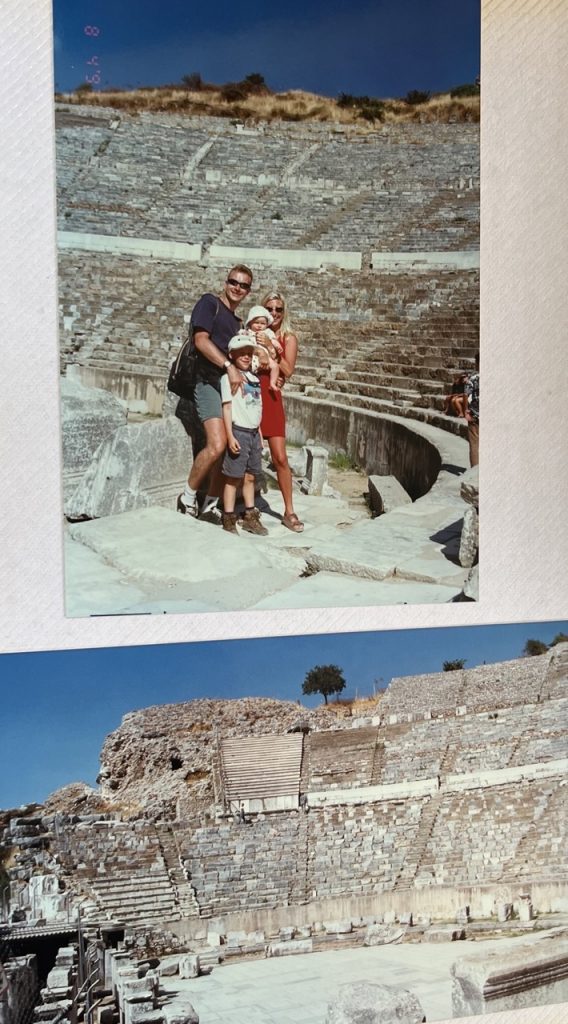
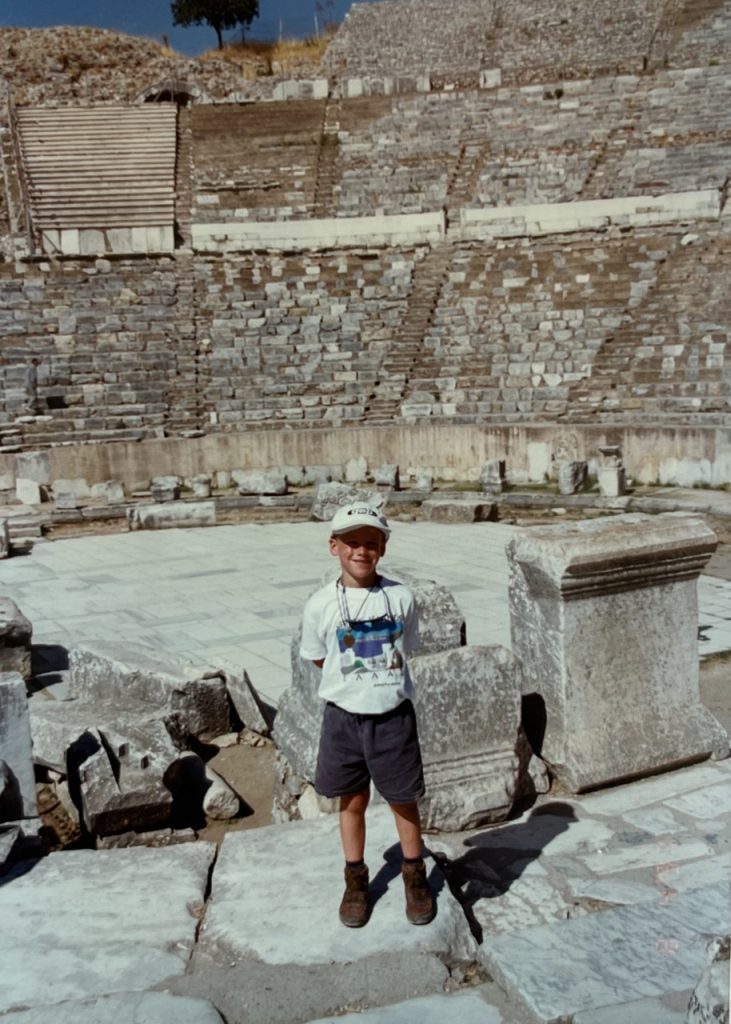
The epic Ephesus was born out of a somewhat fantastical story: in the 10th century BC, Androklos, an Athenian prince, was forced to travel far away after the death of his father. He first went to Delphi, known for its oracles, and asked Apollo there, where he could find a city of his own, and received the answer, “Fish and boars will show you the way.” He took the oracle on a quest that led him to the eastern coast of the Aegean Sea, in what is now Asia Minor, a region of Turkey. One day, while roasting fish on the beach, the live fish that he had thrown into the fire broke free and jumped out, setting fire to a nearby bush and causing a wild boar hiding in it to flee in fear. Androclus hunted down the boar and built the city he had dreamed of.

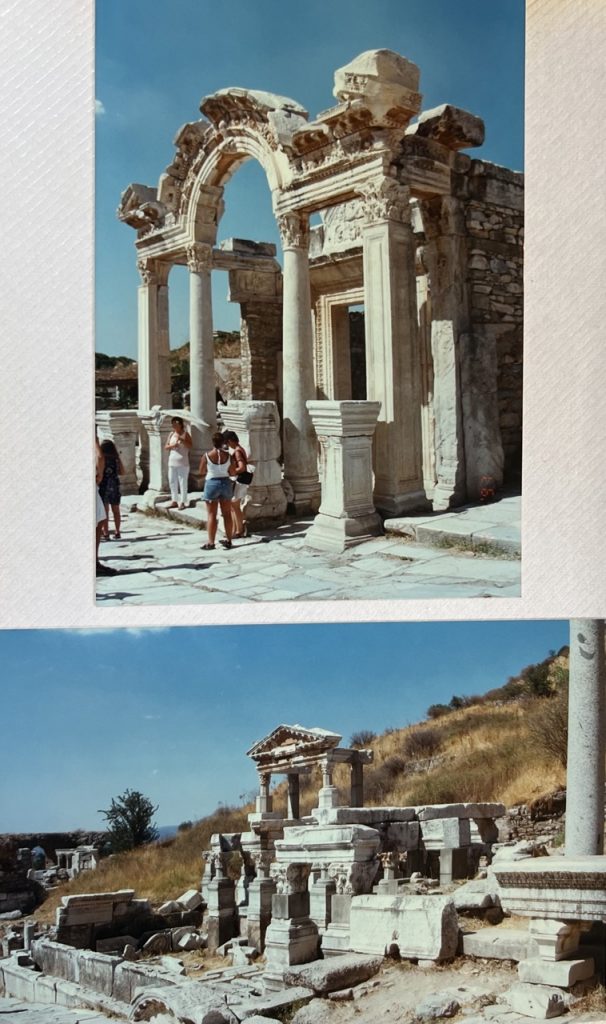
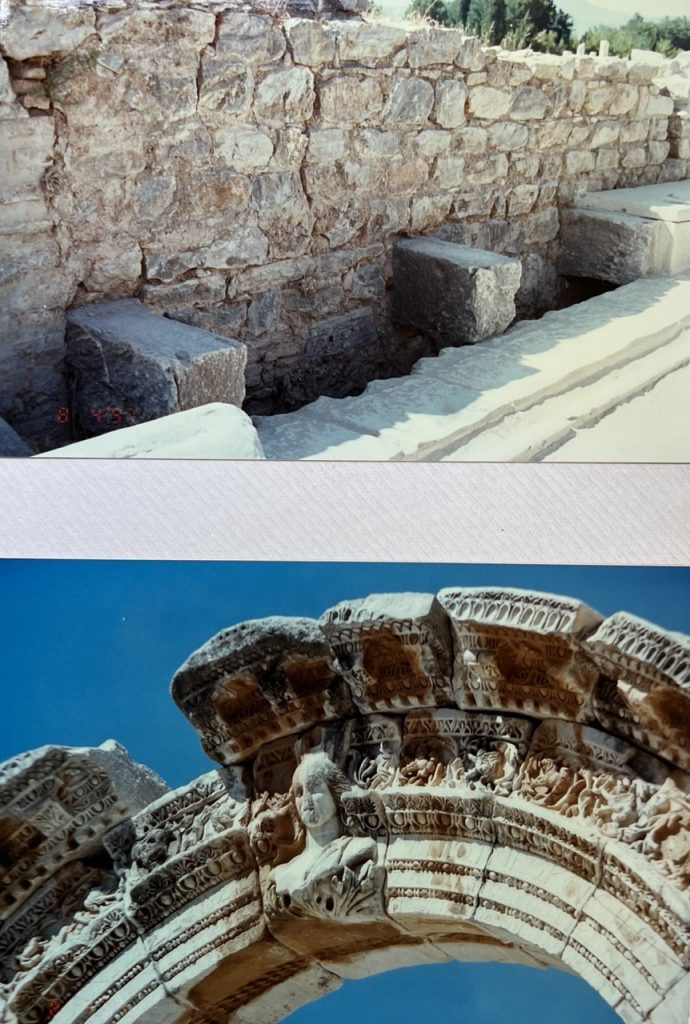
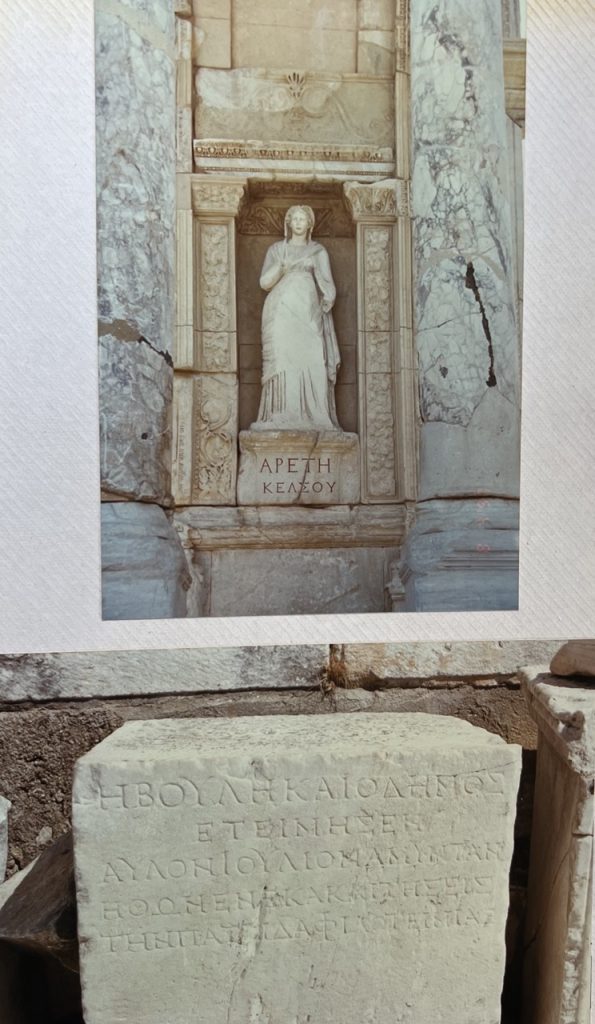
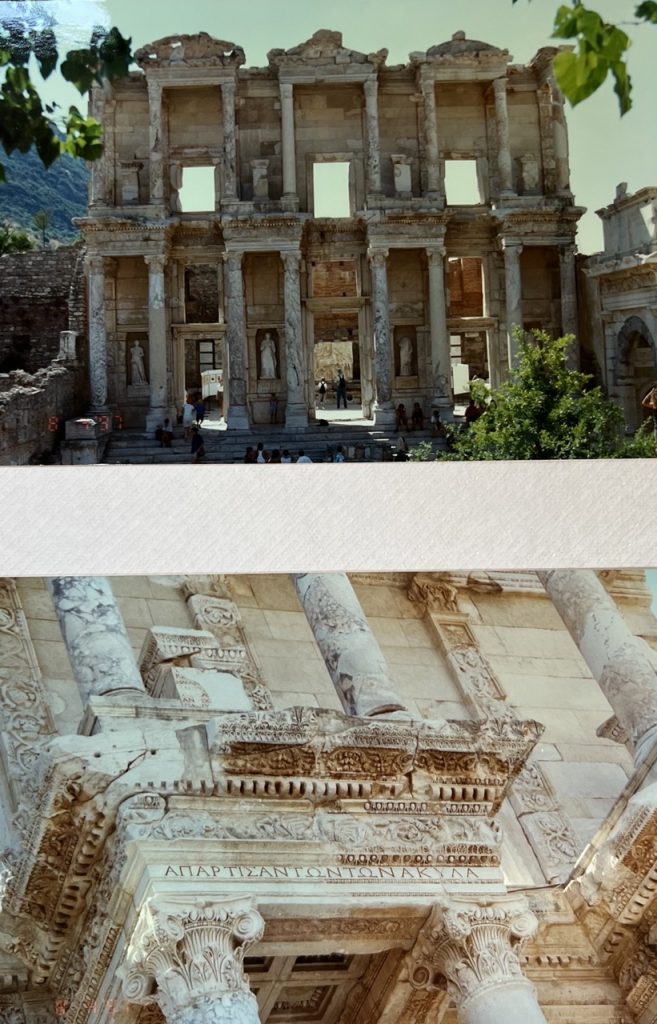
The Latrines were part of the Scholastica Baths and built in the 1C AD. They were for public use. The Private House (so-called brothel) was also a part of the Scholastica complex. Though it has not been archeologically proven, some archeologists are of the opinion that this was a brothel with two floors, the upper floor being for ladies and the ground floor for visitors. Engraved into the marble were signs directing you to the brothel!

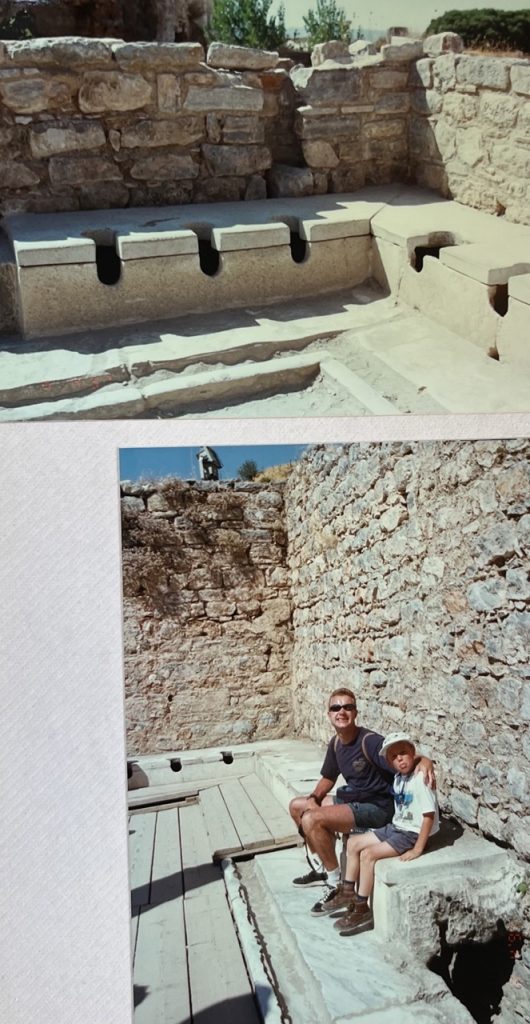
It was brutally hot and we could not wait. to get back on the boat and swim despite being fascinated with this most amazing archeological site!
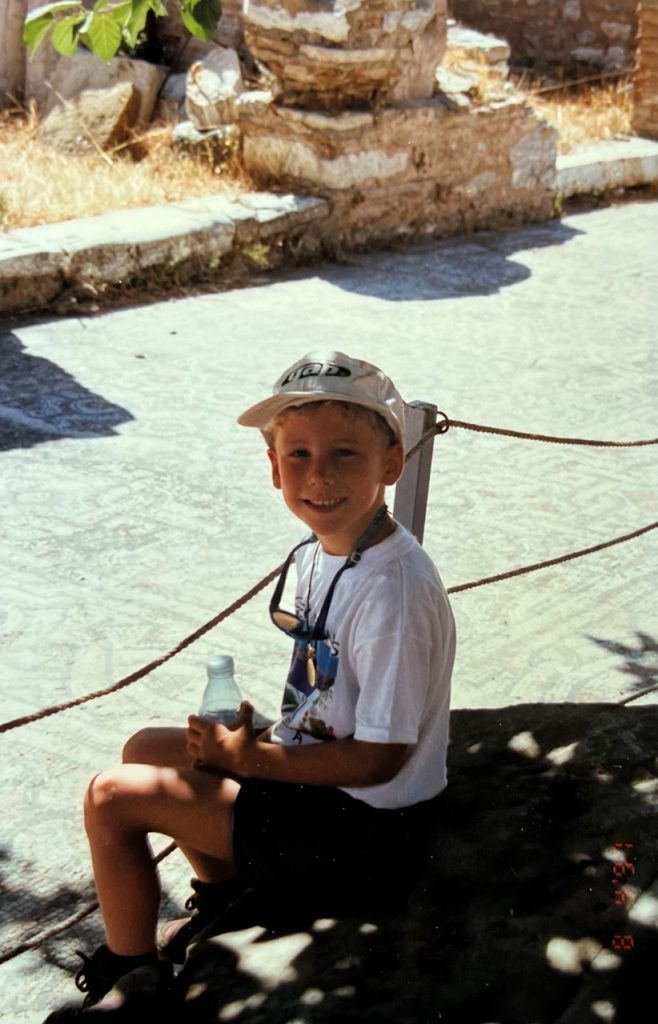
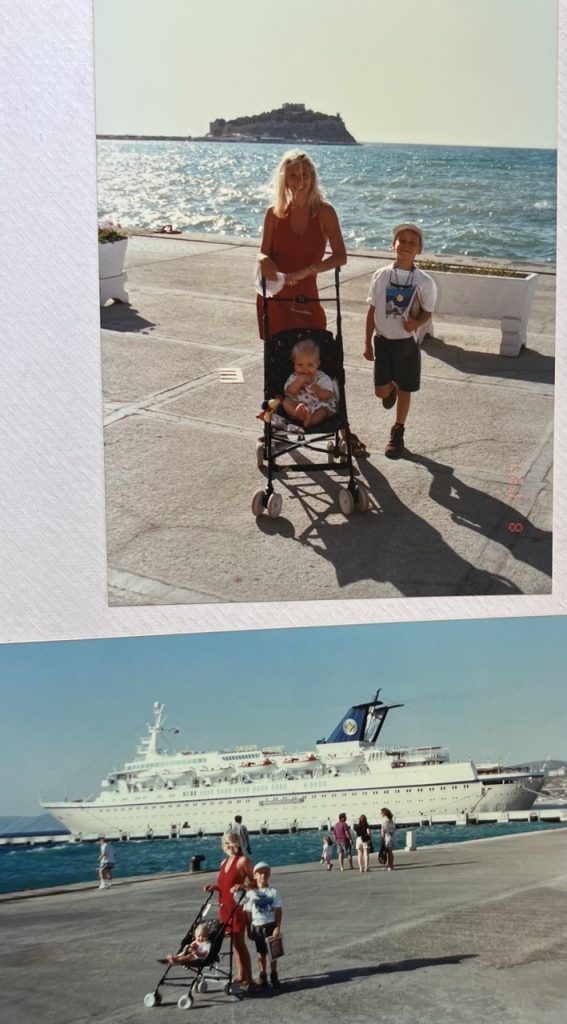
We set off for Istanbul! SO EXCITING! Istanbul is a major city in Turkey that straddles Europe and Asia across the Bosphorus Strait. Its Old City reflects cultural influences of the many empires that once ruled here. In the Sultanahmet district, the open-air, Roman-era Hippodrome was for centuries the site of chariot races, and Egyptian obelisks also remain. The iconic Byzantine Hagia Sophia features a soaring 6th-century dome and rare Christian mosaics. This IS where East meets West!

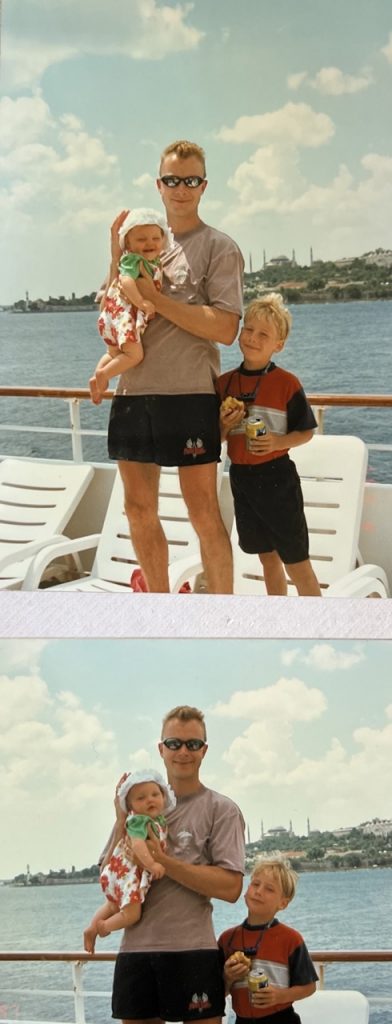
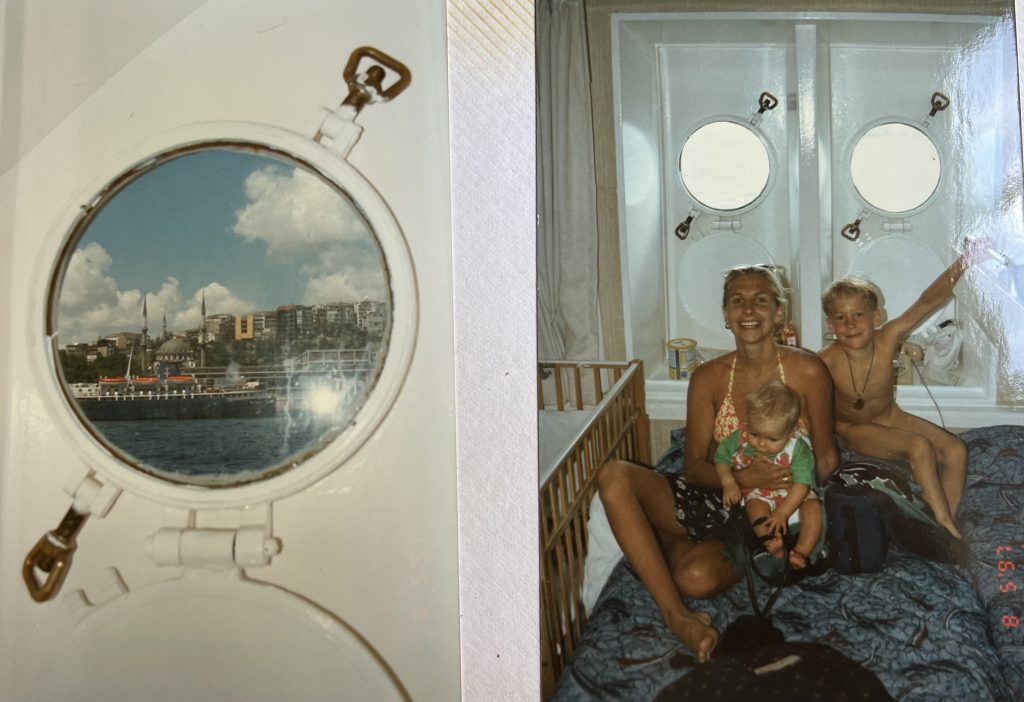
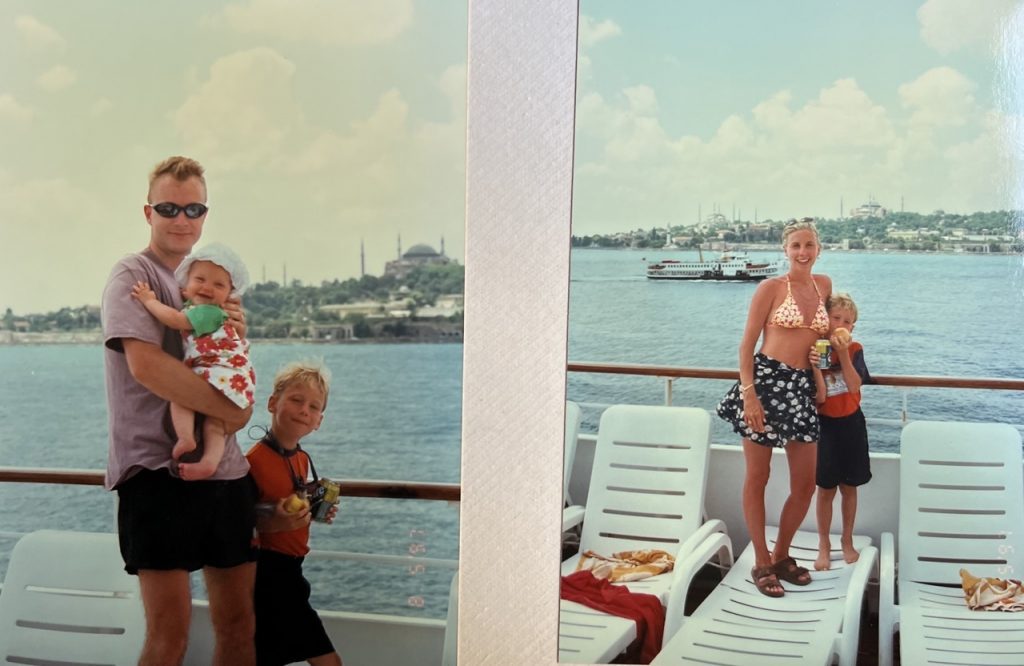
We had a fantastic two days of sight seeing. We visited the most famous landmarks which are most famous landmarks are Hagia Sophia tour, the house of the Ottoman Sultans: Topkapı Palace, with its blue ceramics: Sultanahmet Mosque trip, and the biggest covered bazaar; the Grand Bazaar. Just fascinating.

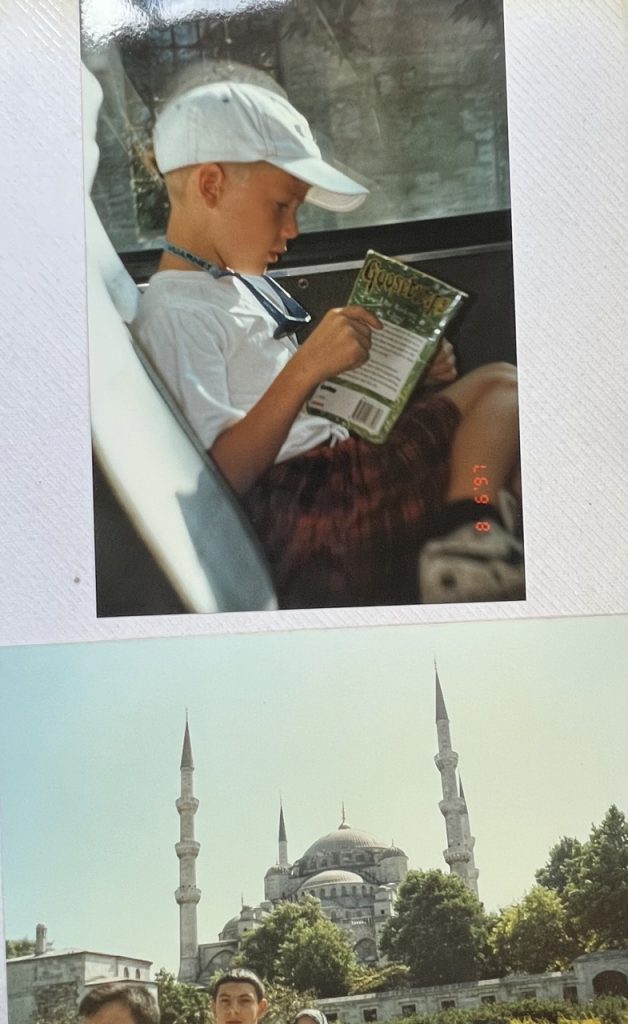

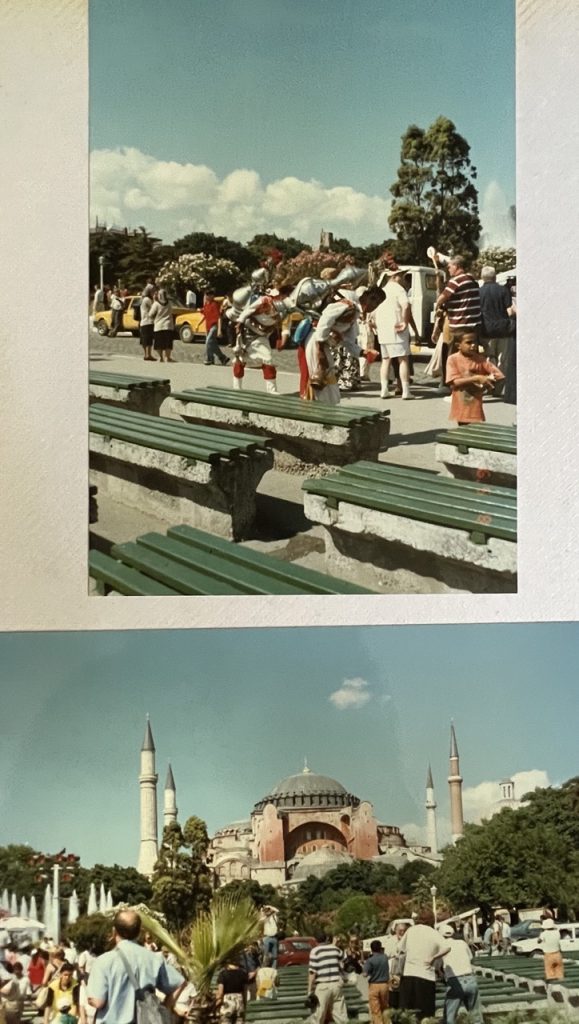
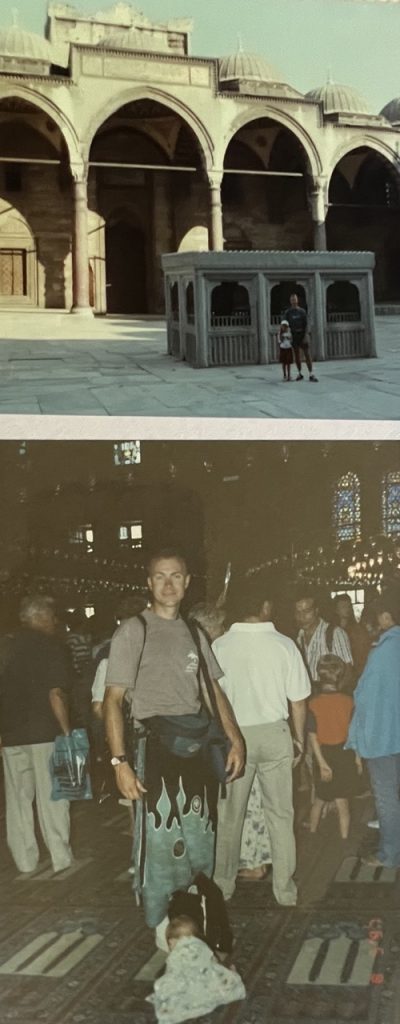
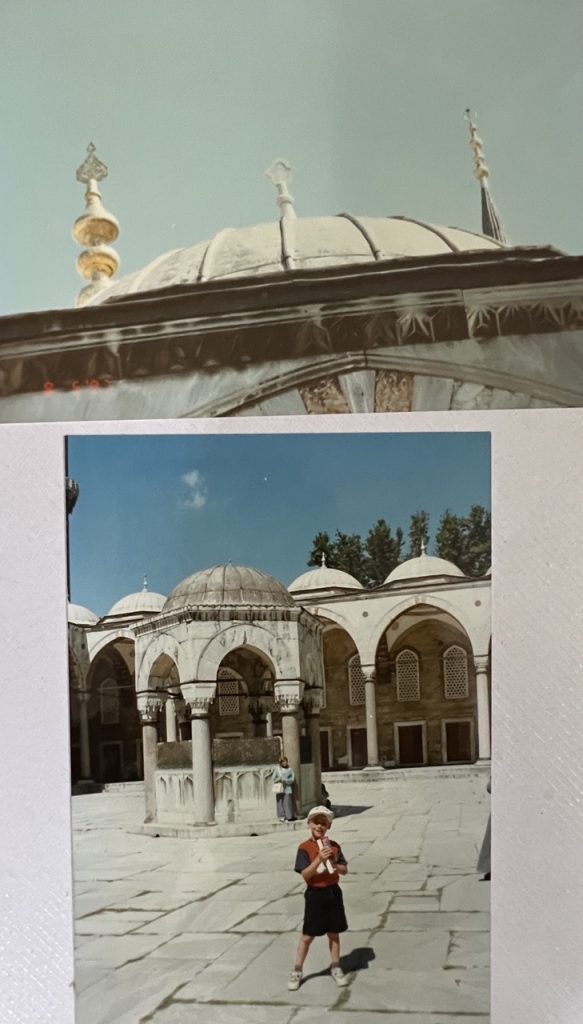
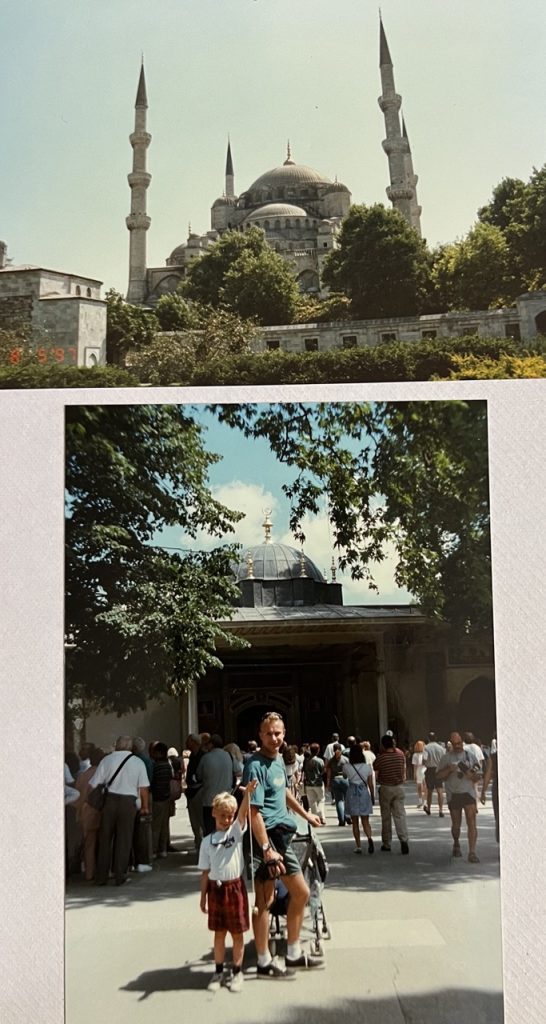
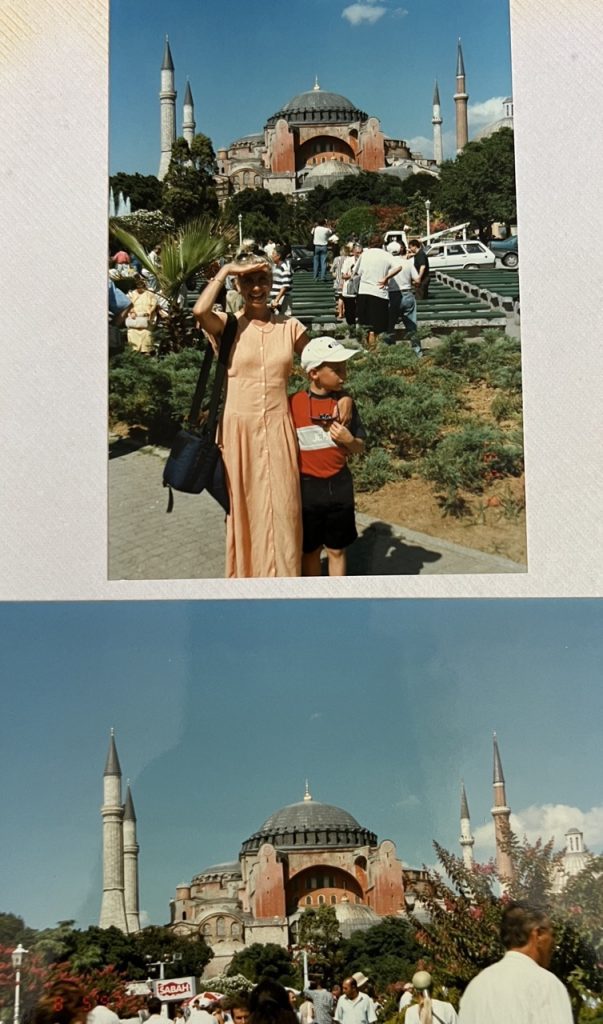


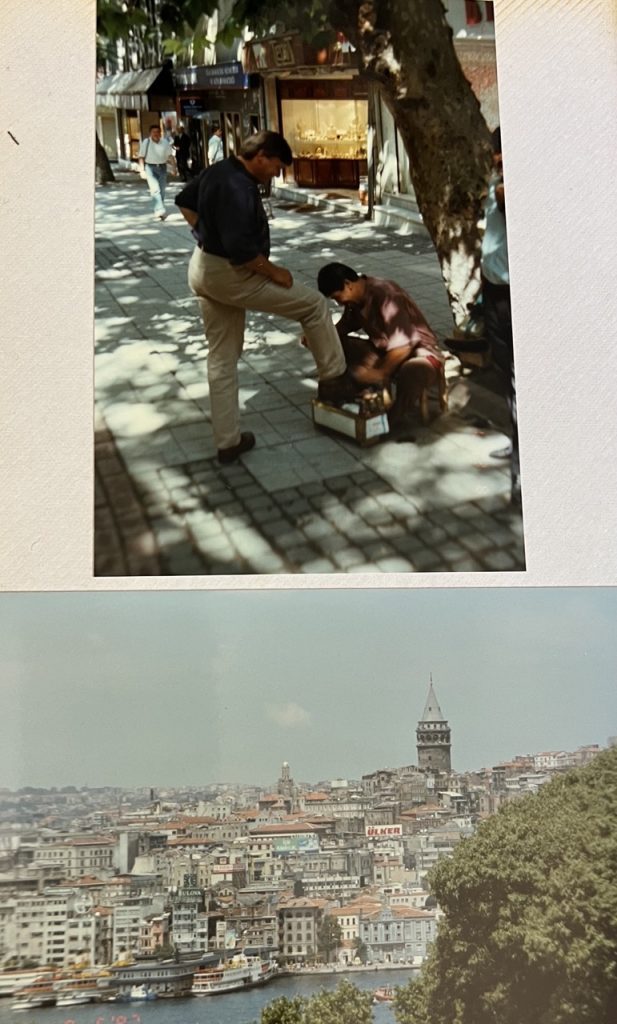
Inside Hagia Sophia, there’s a column where tourists perform an unusual ritual. They make a wish and stick a thumb into a hole within the structure, then attempt to rotate the finger in a perfect circle. Supposedly, if their finger gets wet, it means their wish will be fulfilled or their illnesses will be healed….let’s hope Paul’s finger got wet?! 🙂
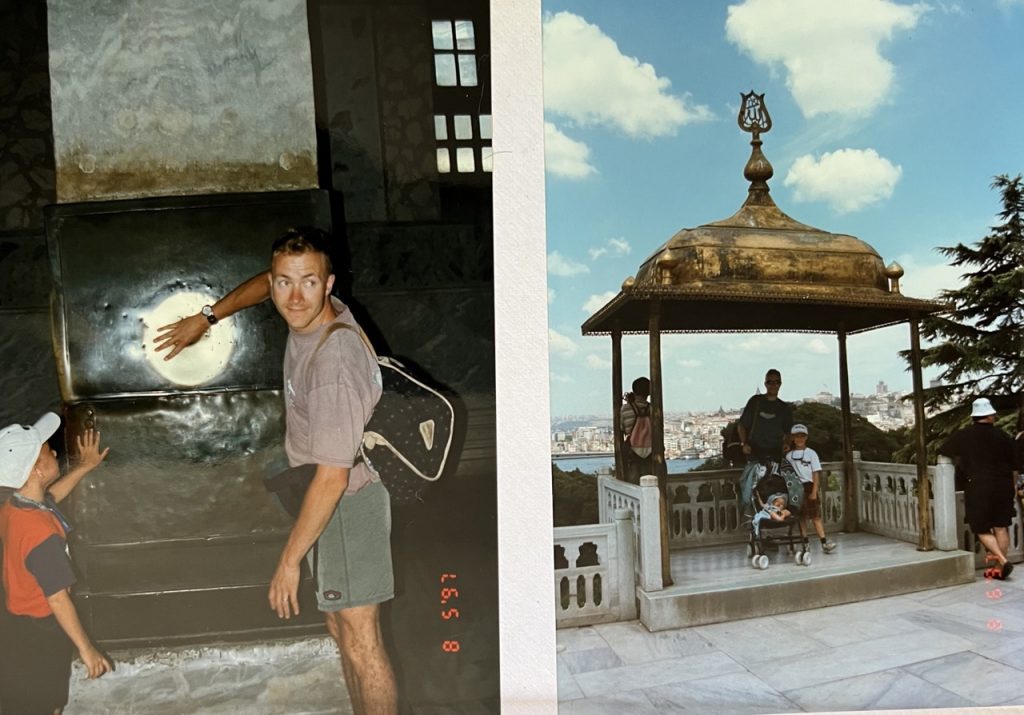

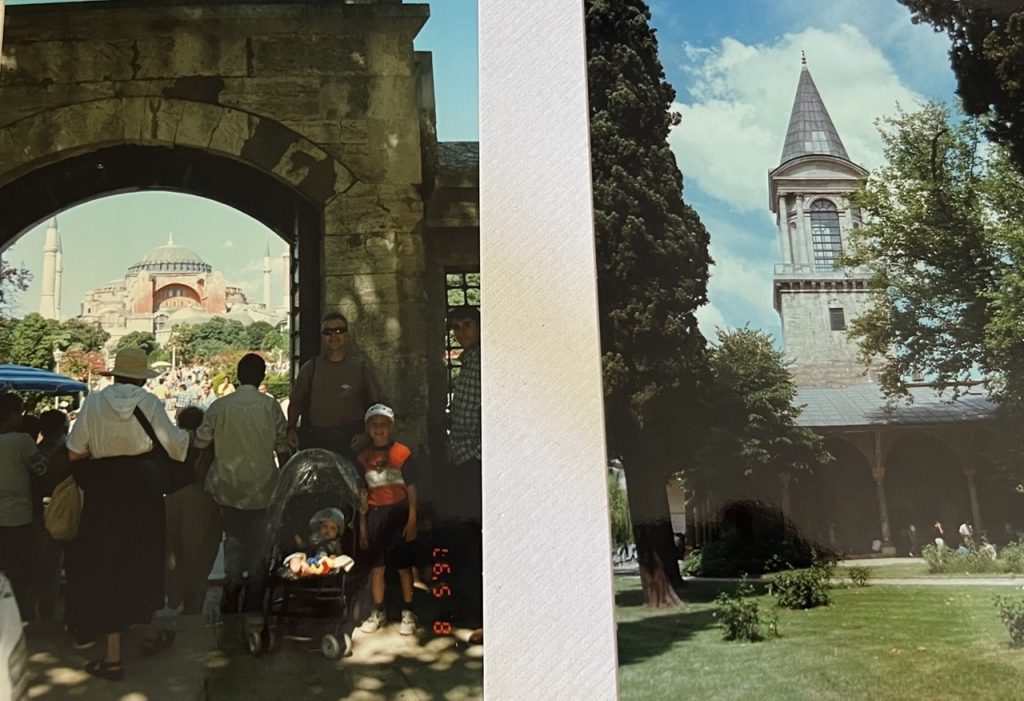
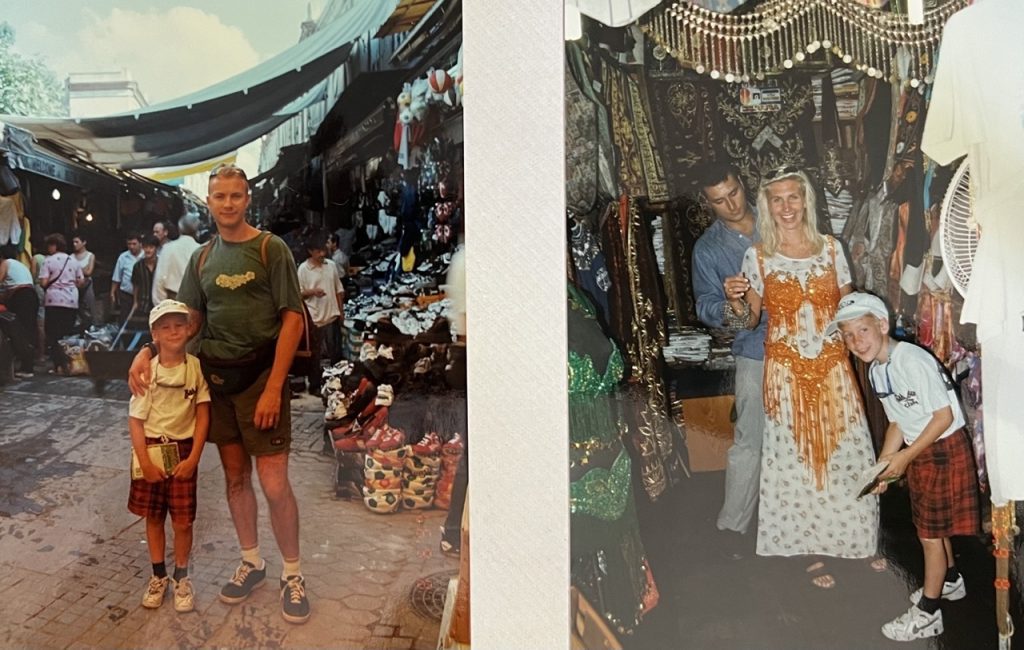

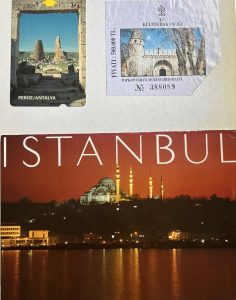
The first evening in Istanbul we went to a Club for dinner and enjoyed watching belly dancers.
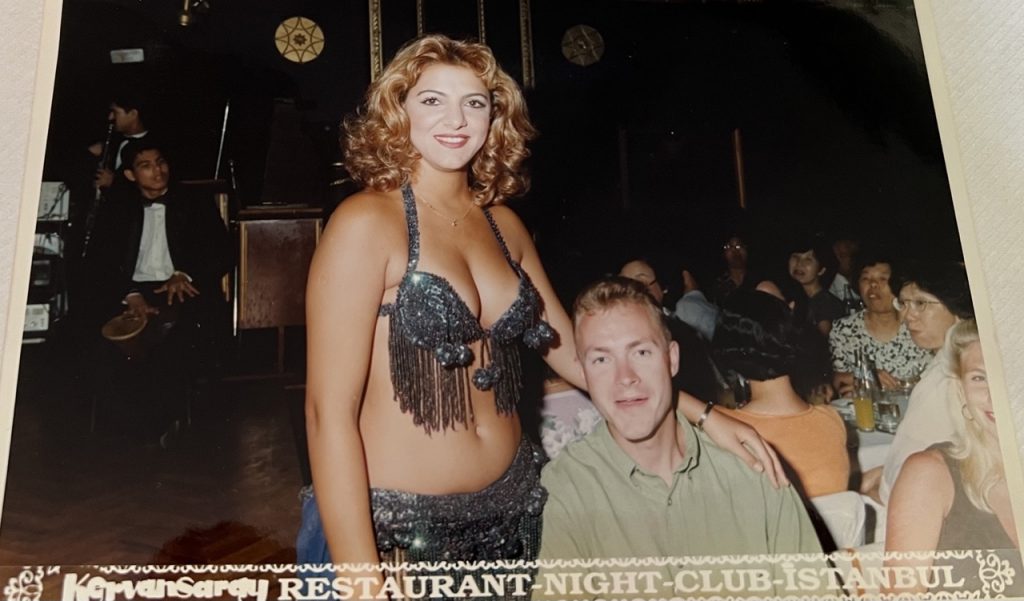
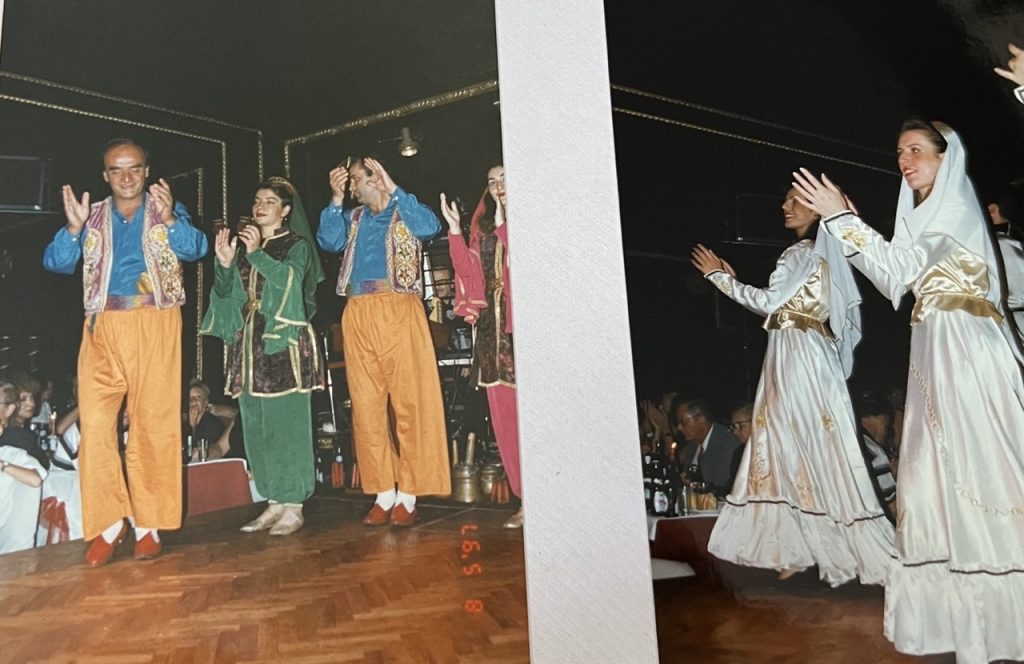
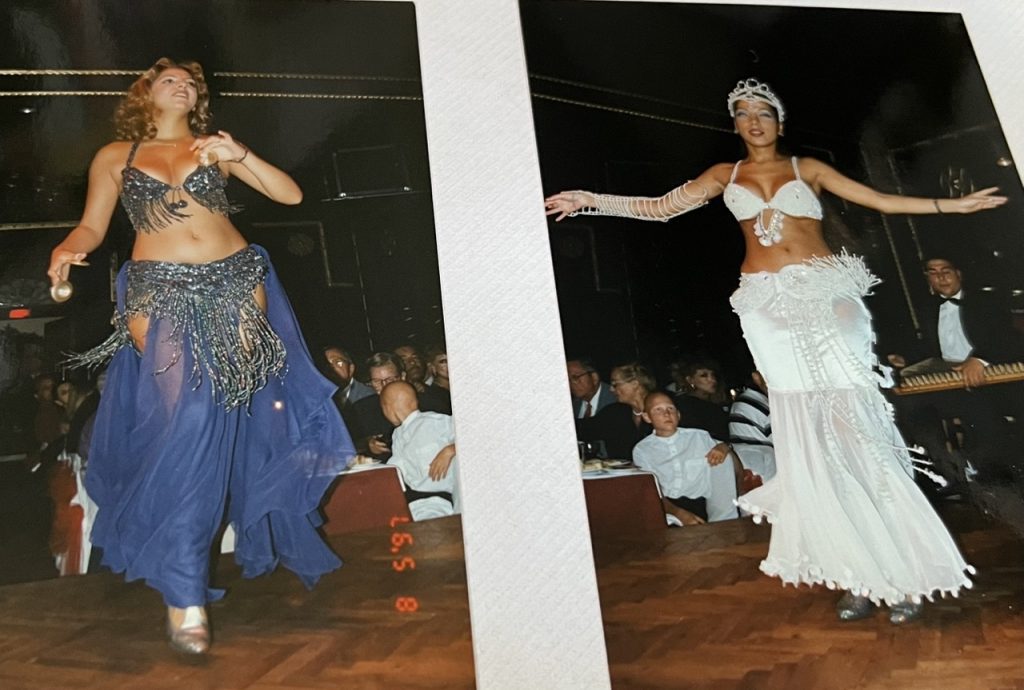
This lady made us laugh as she reminded us of our neighbour at the time – her twin! LOL!

The second evening we enjoyed a fab Dinner Dance on the outer deck of the ship overlooking Istanbul – it was so romantic and such a fantastic setting. The Captain joined our table at the start of the evening and the cocktails flowed! He got quite drunk (it was his night off) and he wept in my arms telling me about the love of his life who was a girl from Durban that he’d had to leave behind … and that I reminded him of her — bless… he had been 2nd in charge on board the Oceanus when it sank off the coast of South Africa in 1991 when the Captain and most officers abandoned ship and had been promoted Captain at a very young age following his bravery at the incident. Such a sweet chap.

The next morning we all felt a little delicate when we took our mini bus to Mykonos. Mykonos is an island in the Cyclades group in the Aegean Sea. It’s popularly known for its summer party atmosphere. Beaches such as Paradise and Super Paradise have bars that blare thumping music. Iconic landmarks include a row of 16th-century windmills, which sit on a hill above Mykonos town.
A local fisherman rescued a wounded pelican in 1958, little knowing that peter the pelican would become the island’s much loved and unlikely mascot as they are not native to the island. From then on Mykonos has not been left without a pelican mascot … Petros the new pelican regularly chilled in the streets of Mykonos. On December 2nd, 1985, the bird was hit by a car. The whole island went into mourning. The bird that was the pride of the island, has been embalmed and is exhibited at the Mykonos museum! Petros II then came into being – a gift from Jackie Kennedy Onassis! The Hamburg zoo also donated a Petros Pelican and some years later another wounded pelican found itself in Mykonos – as such today, there is not one but three pelicans freely roaming the streets of Mykonos! 🙂 I managed to get a pic of Petros II below.
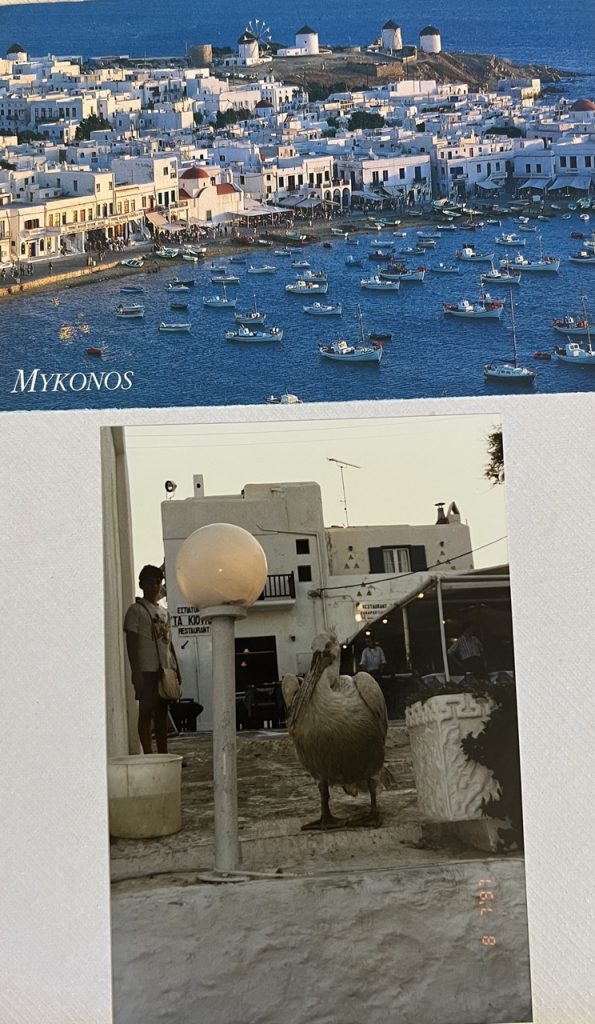
We spent the rest of the day eating and chilling on one of the vibey beaches where some people chose to go nude! 🙂 Our camera film was sun damaged 🙁
The windmills on Mykonos were first constructed by the Venetians at some point during the 16th-century. Like many of the islands in modern day Greece, Mykonos once lay on an important trade route and its windy weather was perfect for operating windmills.





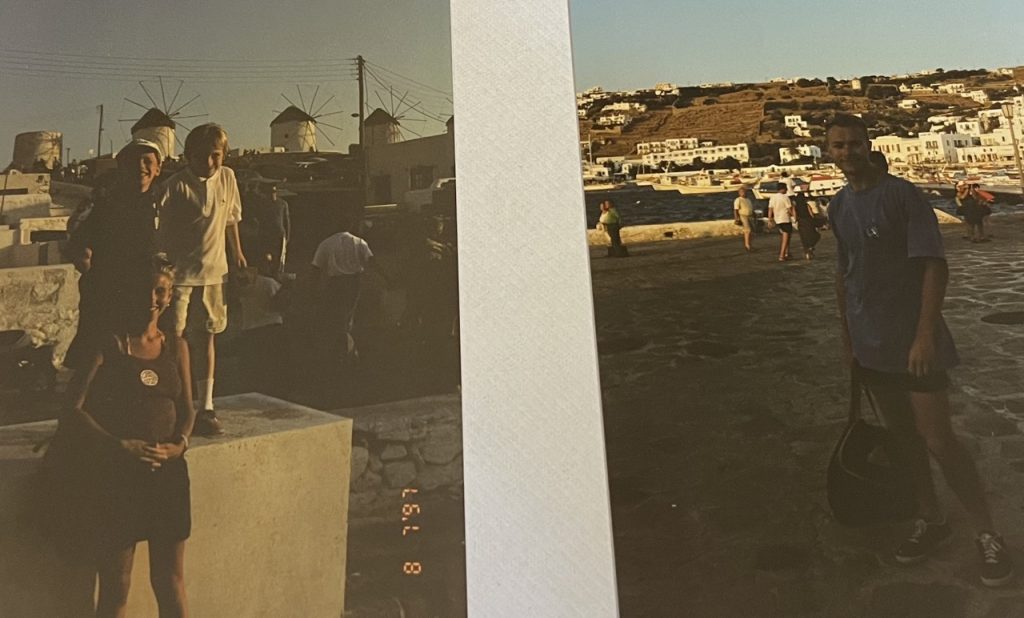

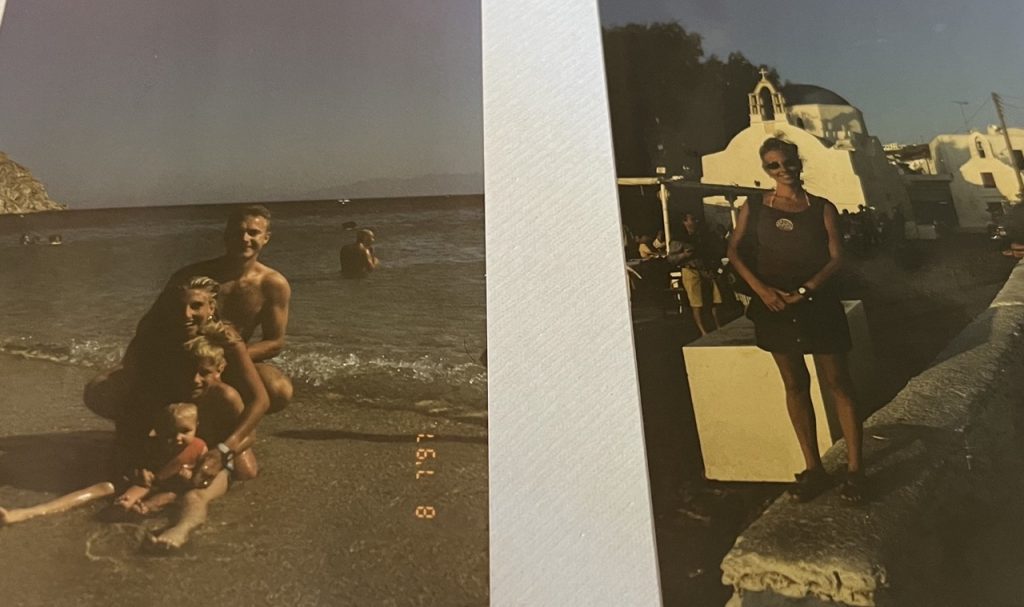

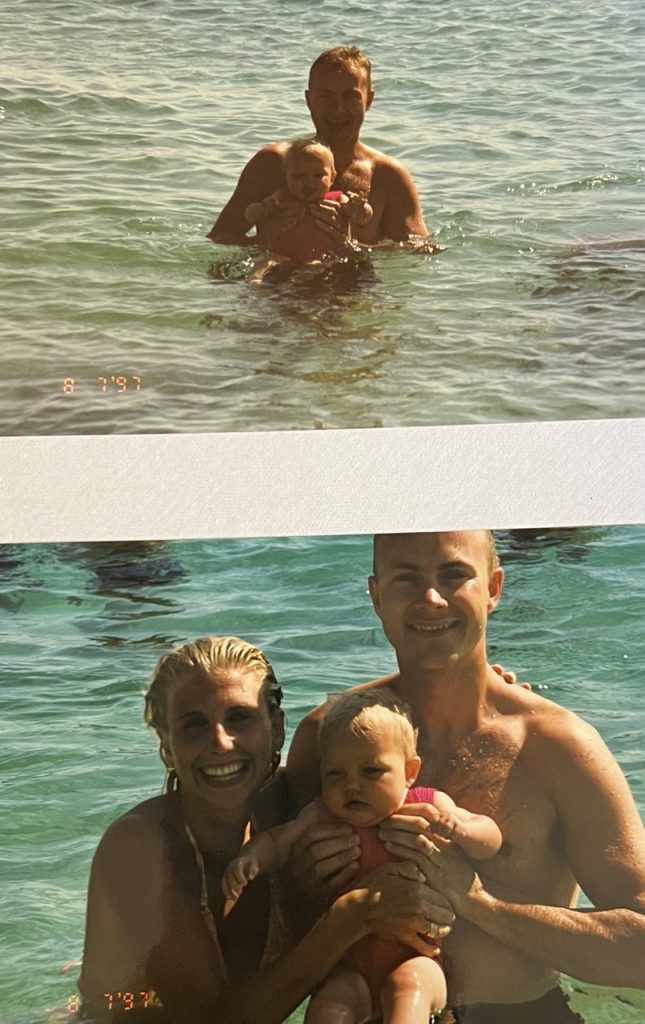

Our next day was spent at Delos and Patmos.
Between 900 BC and 100 AD, Delos was a major cult centre, where the gods Dionysus and Leto, mother of the twin deities Apollo and Artemis, were revered. Eventually acquiring Panhellenic religious significance, Delos was initially a religious pilgrimage for the Ionians. The Curse of Delos is a yellow-flowered iceplant that sprouted in celebration of the birth of the twin gods, Apollo and Artemis. It was the final ingredient required for the Physician’s Cure. Amazingly, certain ruins of ancient stone huts on Delos date back to the 3rd millennium BC.
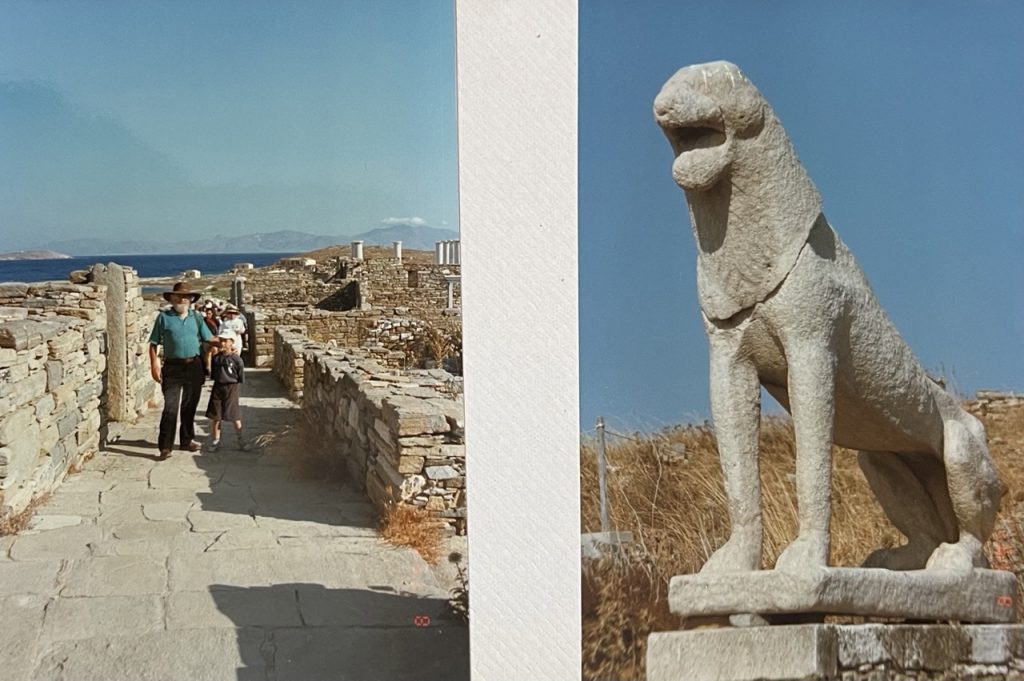



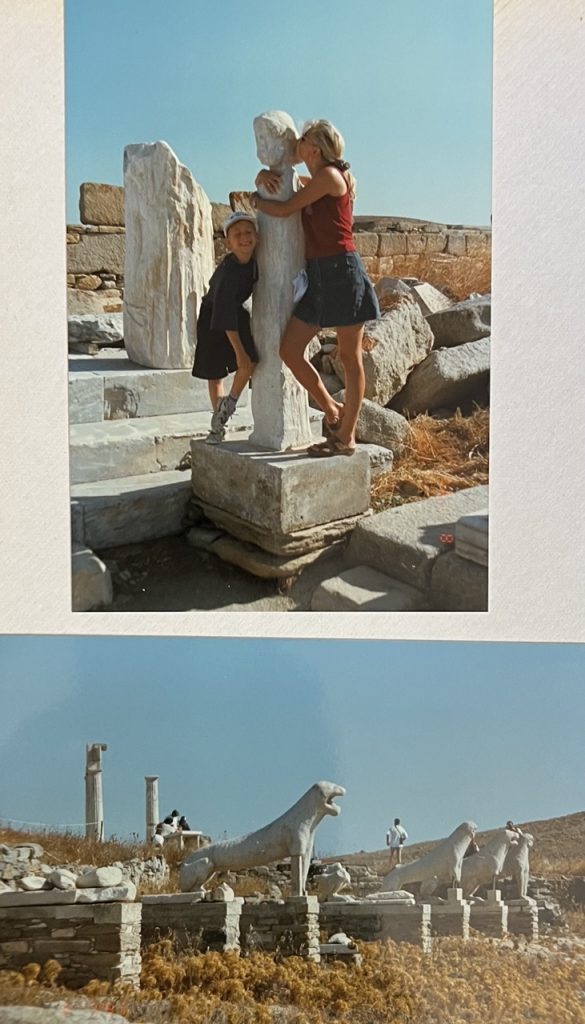

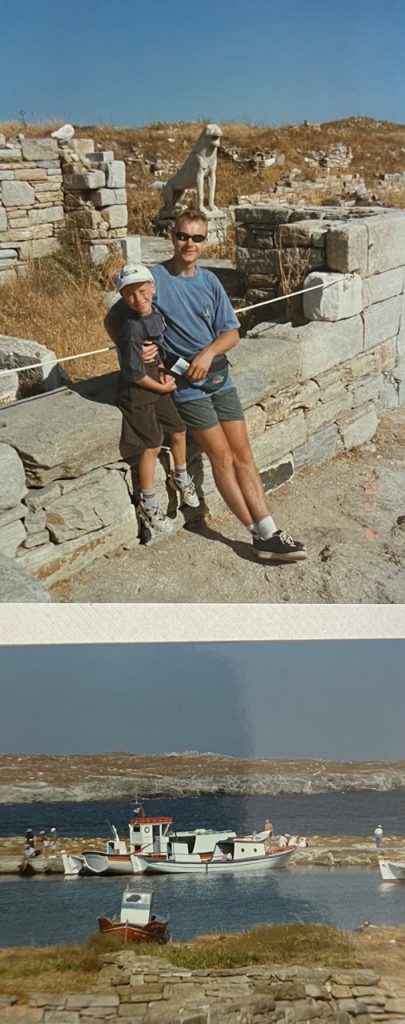

Patmos, an Aegean island in the north of Greece’s Dodecanese island group, is a significant Christian pilgrimage site. Its Cave of the Apocalypse is where John of Patmos (St. John the Theologian) is said to have written the Book of Revelations. A fortresslike, 11th-century monastery dedicated to the saint overlooks the whitewashed houses of the hilltop capital, Hora.
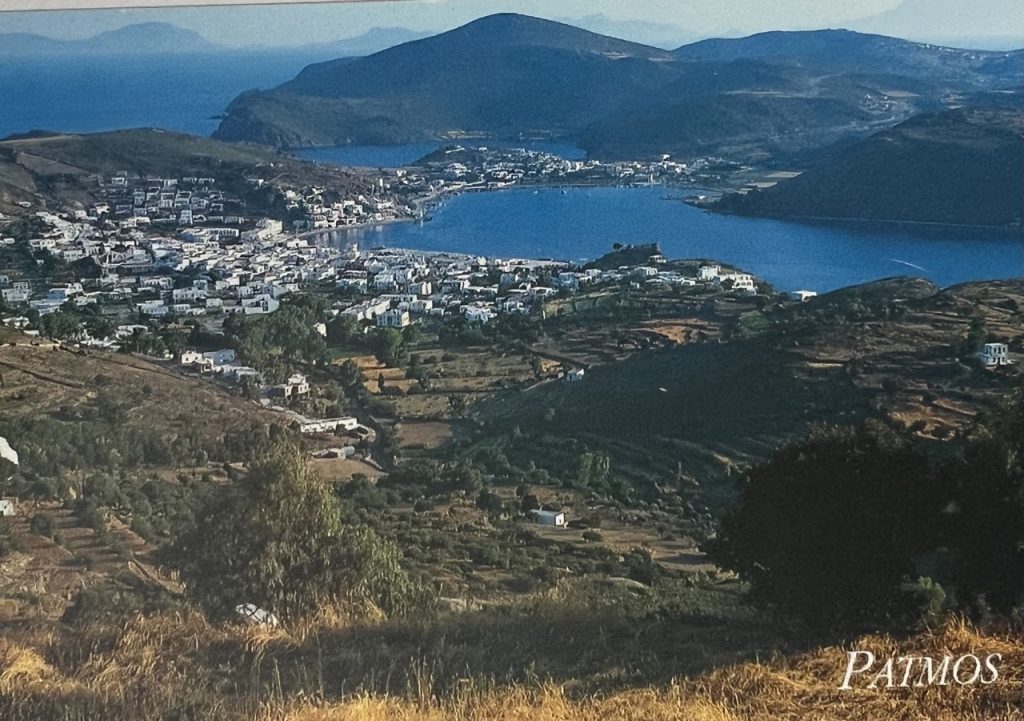

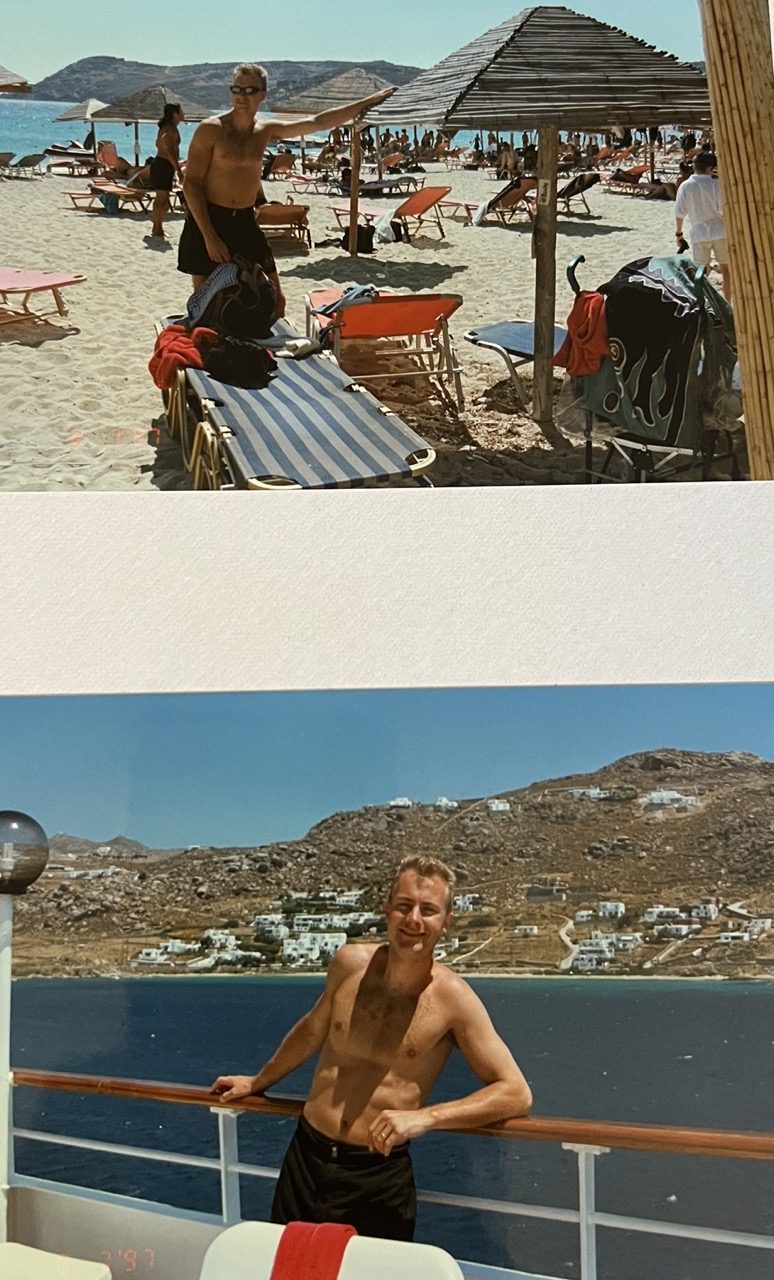





We had absolutely loved every minute of our cruise and our new found friends – what an experience … and all the history and beauty of the islands – AMAZING. BUT it was not over yet – we still had the Acropolis and theParthenon to explore on our last day! The site spreads over 7.3 acres and dates back to the Middle Neolithic era (10,000 BCE). Several monumental spaces such as the Parthenon, Old Temple of Athena, Erechtheum, Temple of Athena Nike, Theatre of Dionysus Eleuthereus, and others can be found in the ruins. JUST WOW!!!!




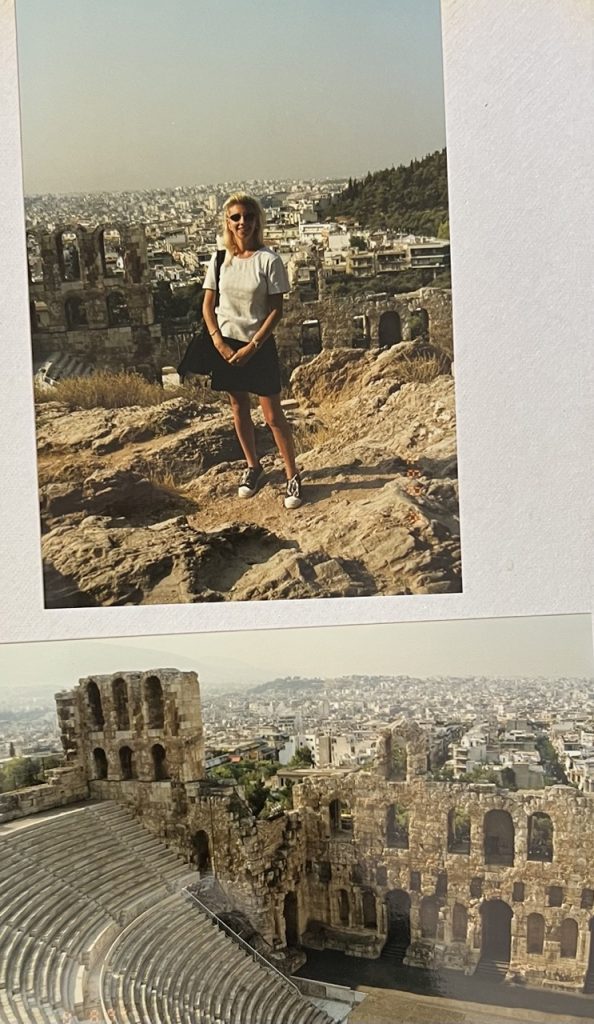

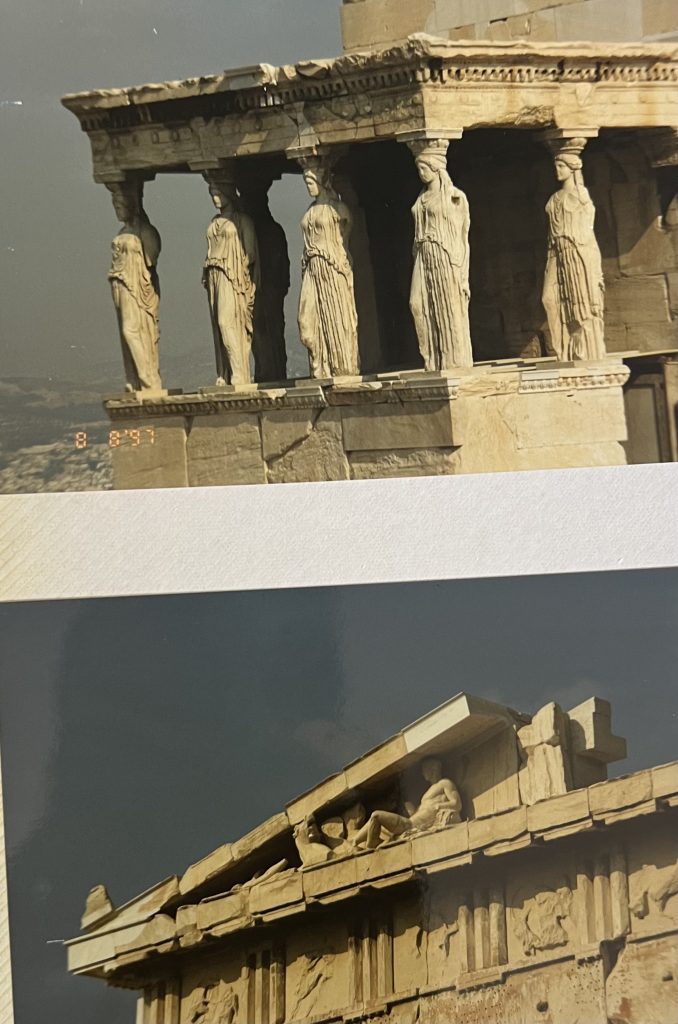

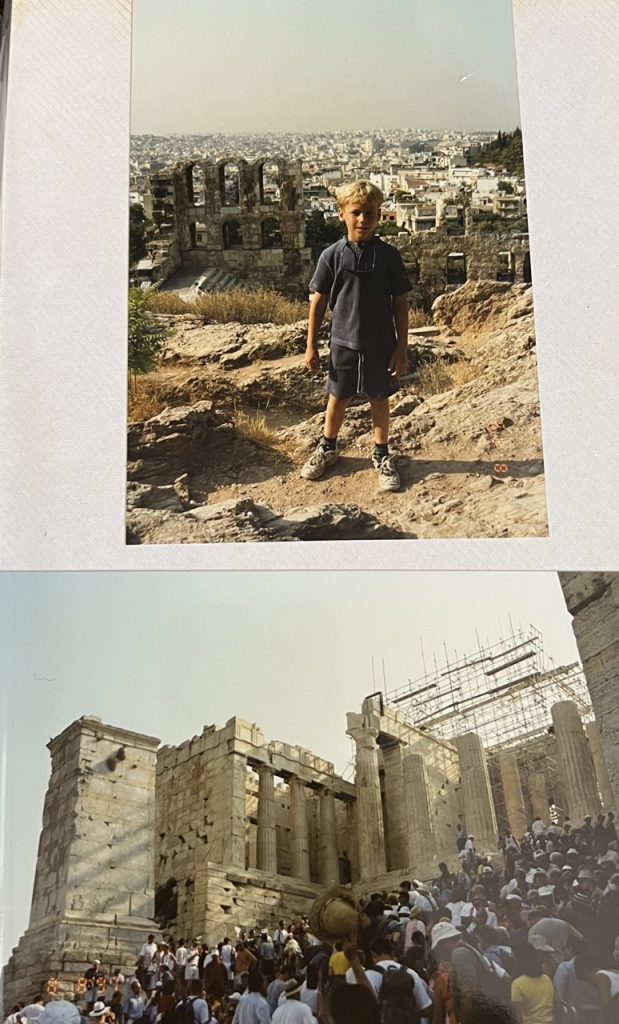



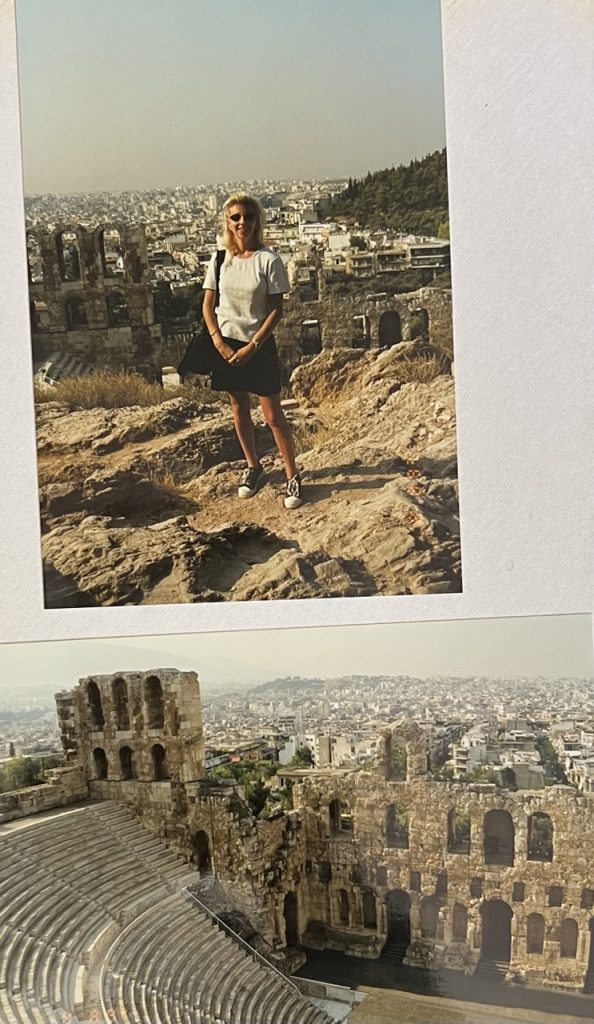



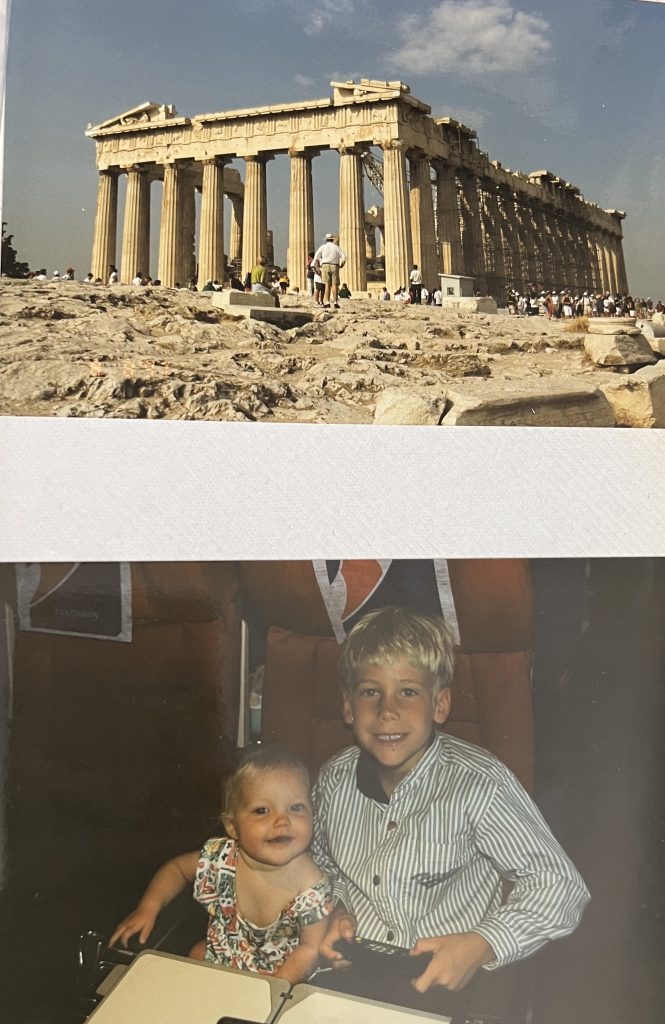

Go to: Greece

